The Red Sea's regenerative tourism takes center stage with John Pagano, Group Chief Executive Officer, Red Sea Global
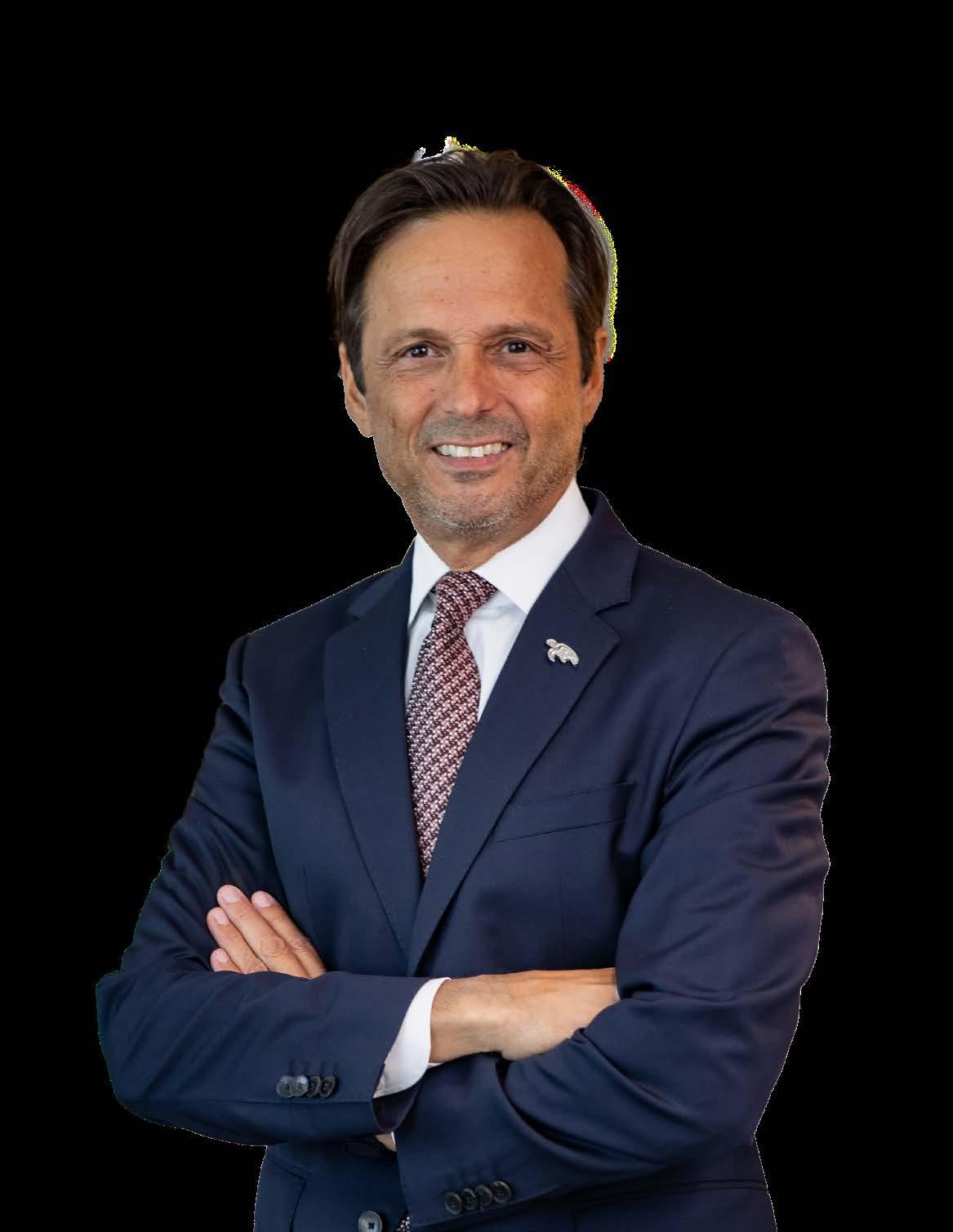
DET: The driving force behind Dubai’s tourism success
With H.E. Issam Kazim, CEO, DCTCM
World Bank

Solutions to combat MENA’s food insecurity challenges
Lessons learned from US banking crisis
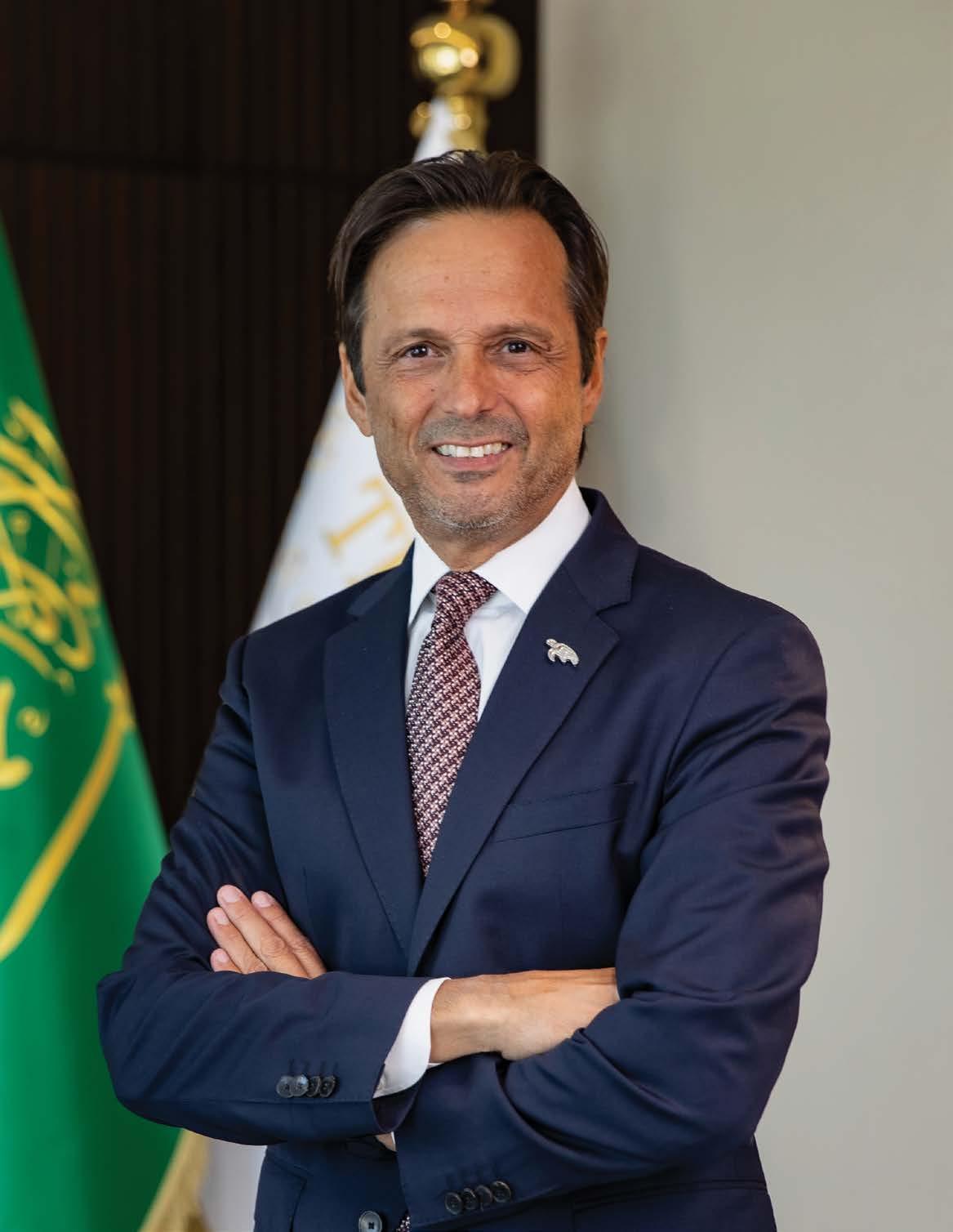
Bahrain . Kuwait . Oman . Qatar . Saudi Arabia . UAE . Egypt . MENA . Asia . Europe . The Americas May 2023
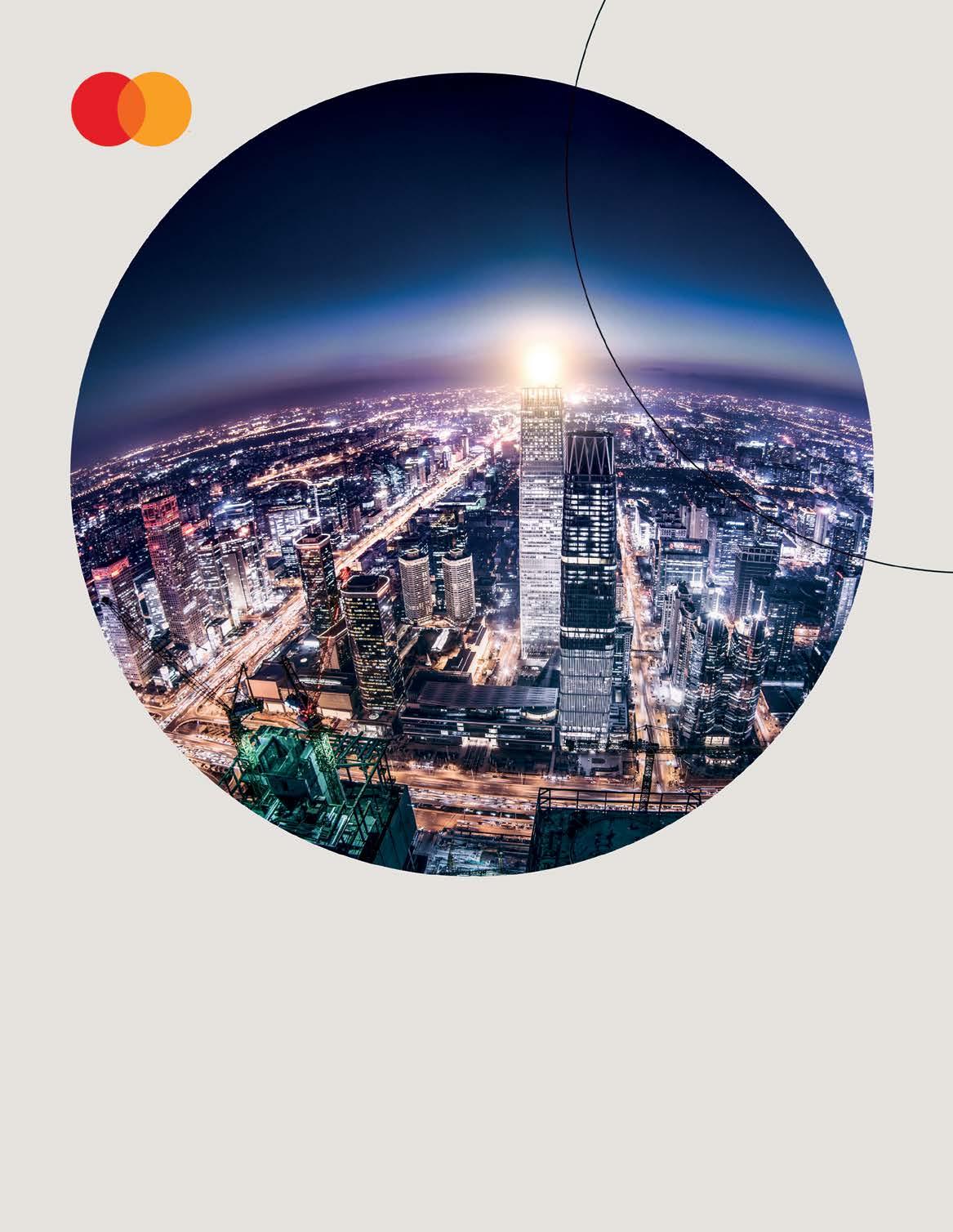



Contents
| May 2023
Hospitality & Tourism

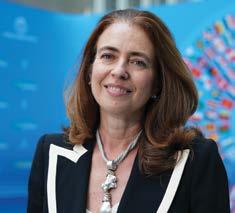

A luxurious, eco-friendly haven:
regenerative

takes center stage
A world of personalization, empathy and adventure

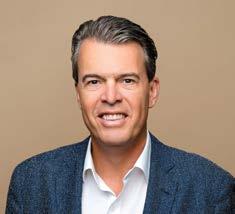

Economy
 With H.E. Issam Kazim, CEO of the Dubai Corporation for Tourism & Commerce Marketing
With Jochem-Jan Sleiffer, President of Middle East, Africa & Türkiye, Hilton
With Roberta Gatti, Chief Economist Middle East and North Africa, World Bank
With Simon Casson, President of Hotel Operations for Europe, Middle East, and Africa, Four Seasons
DET: The driving force behind Dubai's tourism success Hilton: Growth, workplace culture, ESG strategy
Solutions to combat MENA's food insecurity challenges
Cover Story with John Pagano, Group Chief Executive Officer, Red Sea Global
With H.E. Issam Kazim, CEO of the Dubai Corporation for Tourism & Commerce Marketing
With Jochem-Jan Sleiffer, President of Middle East, Africa & Türkiye, Hilton
With Roberta Gatti, Chief Economist Middle East and North Africa, World Bank
With Simon Casson, President of Hotel Operations for Europe, Middle East, and Africa, Four Seasons
DET: The driving force behind Dubai's tourism success Hilton: Growth, workplace culture, ESG strategy
Solutions to combat MENA's food insecurity challenges
Cover Story with John Pagano, Group Chief Executive Officer, Red Sea Global
22
28
The Red Sea's
tourism
26 32
36
With Haitham Mattar, Managing Director, IMEA, IHG Hotels & Resorts 30
IHG Hotels and Resorts: Room to grow sustainably
16
Oil prices steady after surge on OPEC+ cut
34
Risks warnings amid low global growth prospects



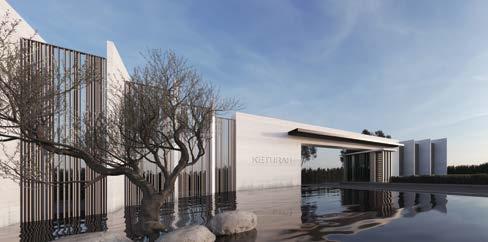
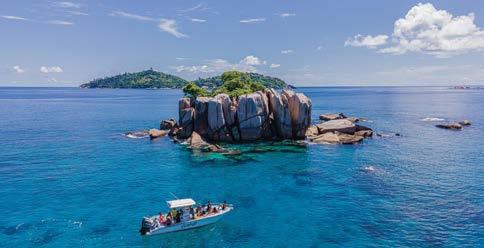

6 conomy middle east MAY 2023 Keturah Reserve offers transformational living Pristine destination tailored for the GCC traveler Banking & Finance Technology & Innovation lifestyle Real Estate Legal review US banking crisis prompts re-evaluation of liquidity rules Luxury meets nature in the heart of Meydan, Dubai Seychelles Middle East businesses should learn from SVB collapse 38 How far are we from "Quantum supremacy"? 46 49 52 58 Contents | May 2023

Publisher . JOSEPH CHIDIAC
EDITORIAL
Managing Editor . HADI KHATIB
Economy Contributor . HALA SAGHBINI
Energy Contributor . KATE DOURIAN
Editor-at-large, Automotive & Lifestyle . ALP SARPER
Tech Editor . MAYANK SHARMA
Digital Editor . ELIAS AL HELOU
CONTRIBUTOR
AHMED FATHALLAH
PR & Content Strategy Director . CYNTIA BSOUSSI
Creative Director . RAYAN BARAKAT
For General Inquiries: info@jcmediagroup.com
For Editorial Inquiries: editorial@jcmediagroup.com
For Advertising Inquiries: commercial@jcmediagroup.com
Publishing House . JC MEDIA GROUP LLC
www.JCmediagroup.com
www.EconomyMiddleEast.com
@economymiddleeast
@economy_me
NOTICE Opinions
8 conomy middle east MAY 2023
Printed at Masar Printing and Publishing LLC
and views expressed in this publication are solely those of the contributors
of the publisher. No part of this publication may be reproduced or transmitted in any form or by
means
of the publisher.
you have finished with this magazine, please recycle it. recycle
and not necessarily those
any
without written permission
When
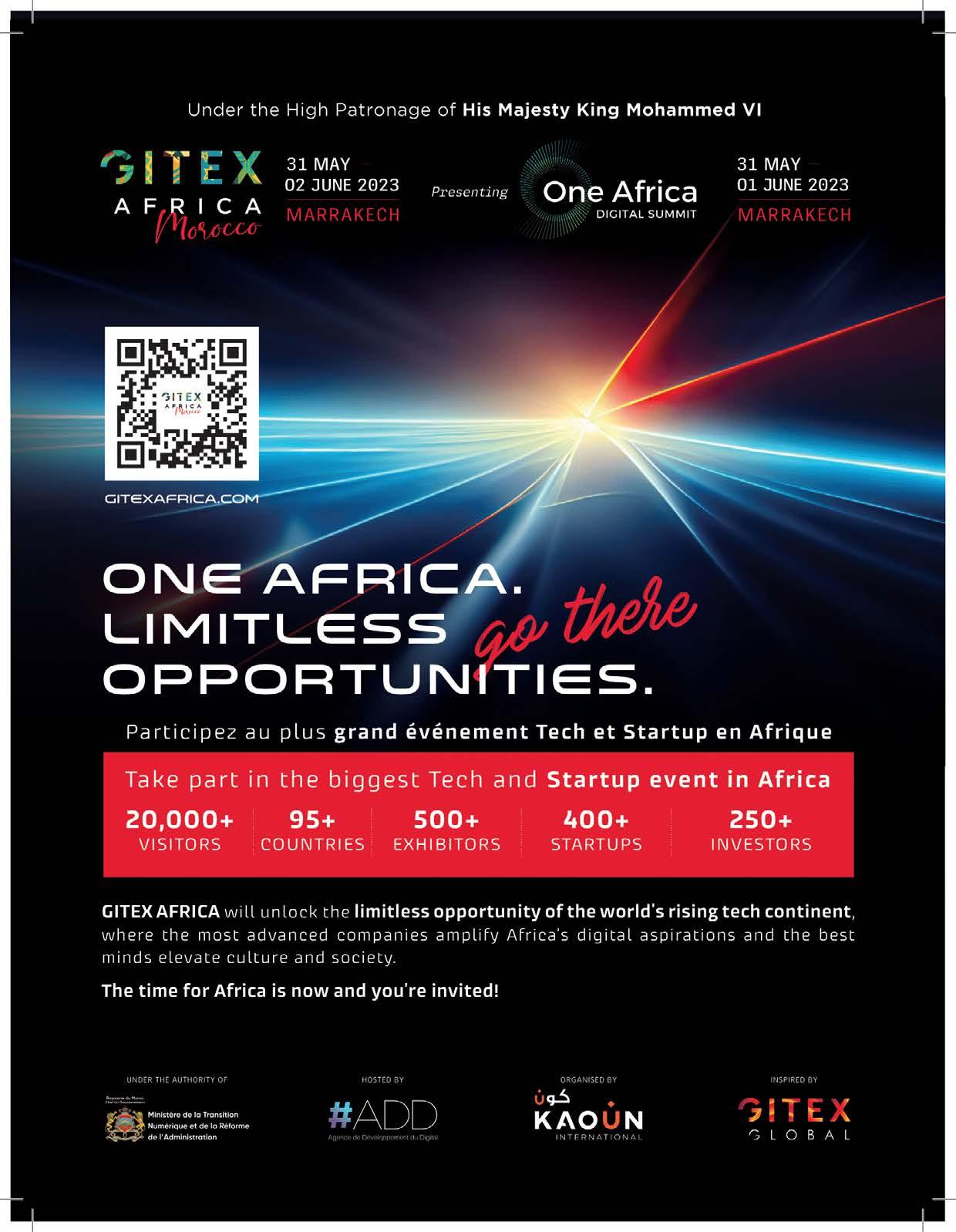
The Gulf's Future Outlook: A Closer Look at the Role of Hospitality and Tourism
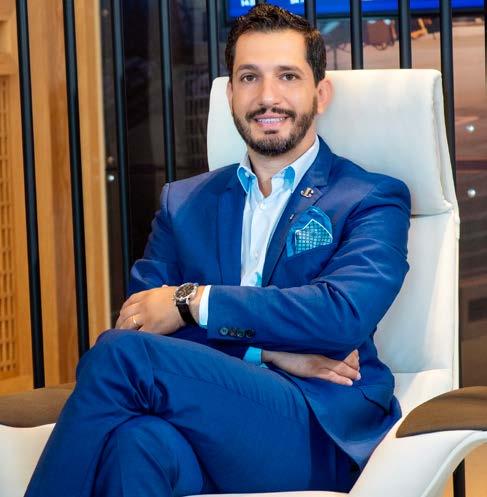
The Gulf countries have implemented clear strategies to diversify their economies, acknowledging that hydrocarbons will eventually become depleted and alternative sources of sustainable economic growth must be sought. The tourism and hospitality industry is among the key growth drivers that governments are promoting as a crucial economic diversification strategy, creating employment opportunities and significantly contributing to their GDP. By establishing appropriate procedures and legislation, robust regulatory frameworks will facilitate the industry’s effective implementation and attract substantial investments, bolstering the Gulf countries’ prominence on the global tourism landscape.
Already, the efforts to enhance the tourism sector are producing positive outcomes. In 2022, the UAE’s tourism industry contributed 11.9 percent to the country’s GDP, with Dubai hosting 14.3 million visitors, a 97 percent increase from 2021. Saudi Arabia’s tourism sector contribution increased to 4 percent by the end of 2022, compared to approximately 3 percent in 2019. The Kingdom aims to elevate the industry’s GDP contribution to 10 percent by 2030.
Across the region, projects are emerging to promote previously undiscovered heritage tourism sites, as part of efforts to stimulate the sector’s growth. Saudi Arabia, for instance, is directing its focus toward promoting its spectacular archaeological discoveries, while the UAE offers several opportunities to explore museums that showcase its rich history and archaeological treasures.
The Gulf states are making significant strides in their pursuit of economic diversification, with Qatar drawing global attention by hosting the 2022 FIFA World Cup and poised to welcome visitors from around the world. Bahrain aims to attract 14.1 million tourists by 2026, while Oman and Kuwait have also initiated extensive redevelopment plans in this sector.
Governments in the region have invested in their tourism infrastructure, featuring luxurious hotels, mountain resorts, desert landscapes, recreational parks, and serene beaches. They are also implementing various policies to strengthen their tourism sectors, such as hosting major global events. With warm hospitality and exceptional services, the region is poised to become a top tourist destination. It is, therefore, not surprising that several GCC cities, including Dubai, rank high in global rankings as some of the best destinations for international travelers.
Chief Executive Officer – Publisher
Joe Chidiac
10 conomy middle east MAY 2023
EDITORIAL LETTER
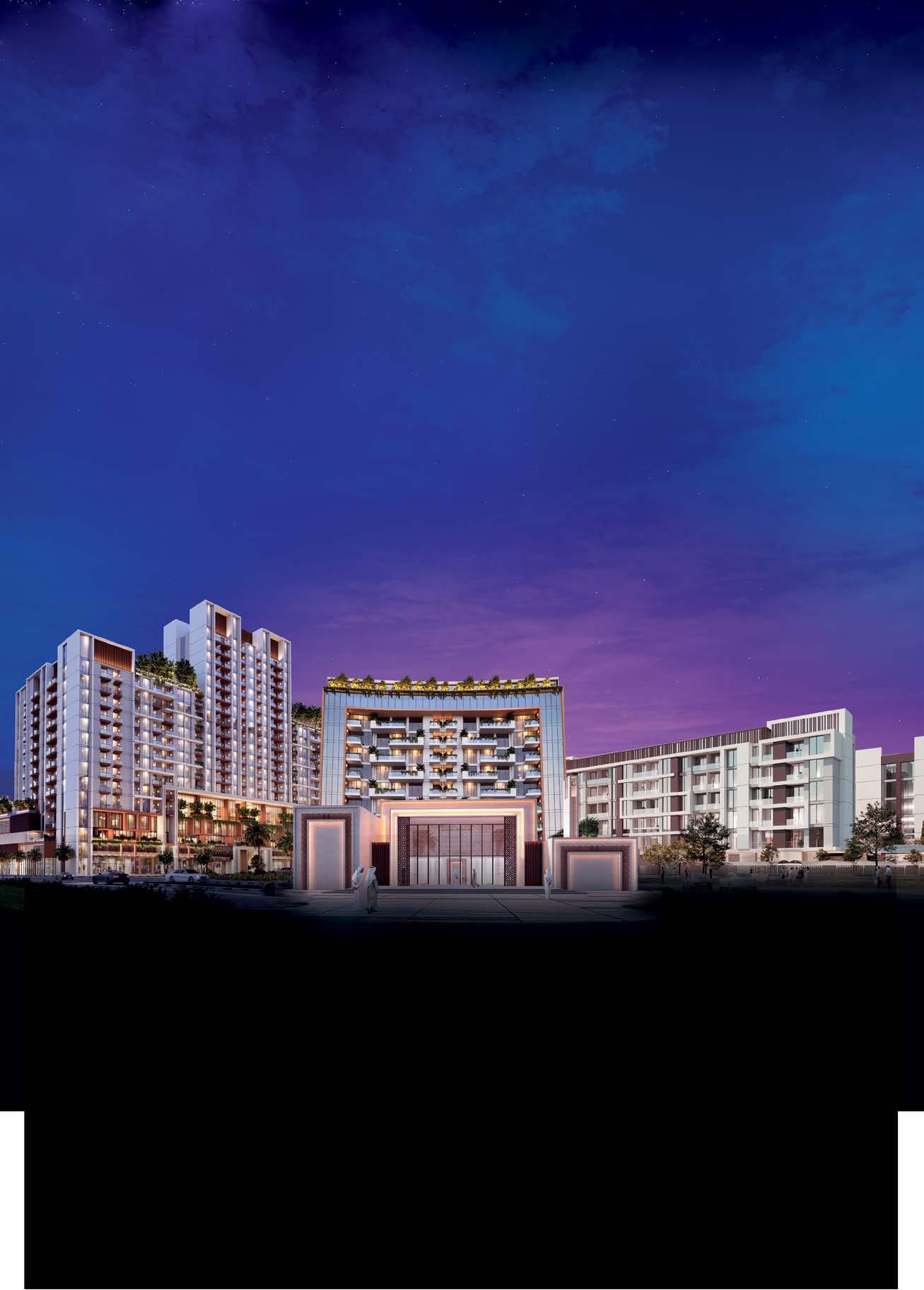



Dubai super-prime residential market sees $14B transactions in Q1
Prices increase by 27.49 percent from previous quarter
According to an analysis of data from the Dubai Land Department by Luxhabitat Sotheby’s International Realty, Dubai’s super-prime residential market witnessed transactions worth AED14 billion in Q1 2023, reflecting a volume reduction of 21.72 percent quarter-on-quarter over Q4 2022. The super prime luxury market in Q1 2023 currently represents 21.7 percent of the overall Dubai residential market in Q1 2023 in terms of volume.
The average price of the super prime property is growing by 27.49 percent QoQ, with an average price of AED25.2 million with 1,811 units sold.
The other super prime areas that continued to see positive volume sales growth QoQ were Al Barari (167.53 percent at
AED926 million), Downtown Dubai (48.78 percent at AED3.4 billion), and Emirates Hills (83.35 percent at AED613.6 million). With AED5.7 billion in super-prime sales, the Palm Jumeirah has seen an increased average in price by 17.26 percent QoQ to AED9.5 million.
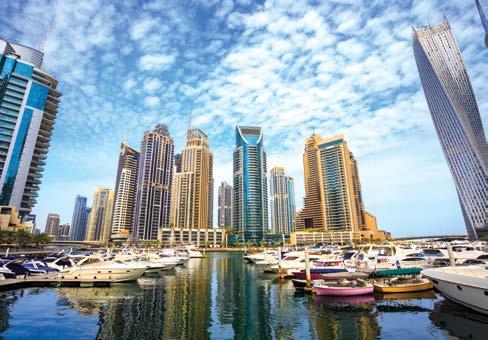
Jumeira Bay had the highest average price at AED10,594 per sq. ft. and an average property price of AED93.3 million dirhams, despite only 22 units being sold in Q1 2023. In the super prime market, 1,584 apartments were sold, totaling AED9.8 billion, which represents 66 percent of the overall prime market volume. Additionally, 294 villas sold for AED5.6 billion in the super-prime market.
New Saudi economic zones offer attractive benefits for investors
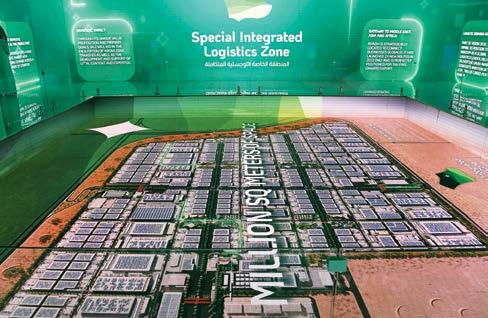
SEZs create hubs for businesses across key growth sectors
The announcement of new economic zones located in Riyadh, Jazan, Ras al-Khair, and King Abdullah Economic City north of Jeddah supports Saudi Crown Prince Mohammed bin Salman’s commitment to strengthening Saudi Arabia’s global investment destination. In a statement by SPA, the Crown Prince said: “Saudi Arabia is open for business, and welcomes investors from all around the world to see first-hand the historic opportunities we have to offer. The new Special Economic Zones, launched today, will significantly impact how business is done in the country, create tens of thousands of
jobs, and contribute billions of riyals to our GDP.”
The SEZs take advantage of Saudi Arabia’s strategic location at the heart of global trade, providing new hubs for businesses in key growth sectors to launch and scale companies and technologies that will shape the future. The SEZs will support national strategies and international frameworks, enhancing key sectors such as logistics, manufacturing, and technology.
Companies in the SEZs will enjoy benefits such as competitive tax rates, customs duty exemption, foreign ownership, and the attraction of top talent.
The new SEZs will boost the local economy, jobs, and supply chains, continuing the Kingdom’s global investment destination initiatives. The detailed regulations and incentives provide attractive offers for foreign investment and accelerate the necessary reforms to facilitate doing business. These four SEZs build on previous free zone initiatives.
12 conomy middle east MAY 2023 short news
QatarEnergy and Sinopec join forces for largest LNG expansion

QatarEnergy transfers a 5 percent stake to Sinopec
QatarEnergy and China Petrochemical Corporation (Sinopec) have signed a partnership agreement for the Northeast Field Expansion Project, the largest project in the history of the LNG (liquefied natural gas) industry. According to Qatar News Agency, under the agreement, QatarEnergy will transfer a 5 percent stake in one production line of the project, which has a capacity of 8 million tons annually, to Sinopec while maintaining the shares of other partners.
Sinopec’s entry as a partner in one of the joint venture companies that own the North East Field Development Project – which is considered one of the most important projects in the global LNG industry – is a significant
milestone for the company.
The signing ceremony, attended by senior officials from both companies, was held at QatarEnergy’s headquarters. The agreement was signed by Minister of State for Energy Affairs and President and CEO of QatarEnergy Saad bin Sherida AlKaabi and Chairman of the Board of Directors of Sinopec Ma Yongxing.
According to Al-Kaabi, China is one of the most significant global gas markets and a major market for Qatari energy products. In November 2022, QatarEnergy entered into a sale and purchase agreement with China Sinopec to supply 4 million tons per year of LNG to China for a 27-year period beginning in 2026. China, being the largest importer of LNG worldwide, met 45 percent of its natural gas requirements through imports last year.
Oman overhauls financial, aviation sectors as part of diversification bid
Oman is implementing significant reforms in its financial and aviation sectors to diversify its economy, promote private sector growth, and attract foreign investment. The country’s aviation industry is evolving with the introduction of new airports and airlines, as well as the expansion of existing ones.
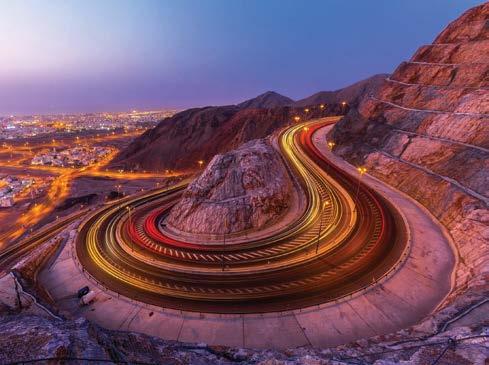
Recently, the Central Bank of Oman raised OMR44 million by allotting Treasury bills. OMR24 million worth of bills with a maturity period of 28 days were allotted at an average accepted price of OMR99.638 for every OMR100, with a minimum accepted price of OMR99.635. The average discount rate and yield for these bills were 4.71458 percent and 4.73170 percent, respectively.
Meanwhile, the remaining OMR20 million worth of bills
had a maturity period of 91 days. The average accepted price for every OMR100 was OMR98.746, with a minimum accepted price of OMR89.745. The average discount rate and yield for these bills were 5.02978 percent and 5.09366 percent, respectively.
Oman Air is renewing its narrow-body fleet to revitalize the aviation industry. The airline aims to retire its entire fleet of five Boeing 737-900ERs by Q4 2025, with the first one being phased out next year. The retiring aircraft, which are mainly utilized for short- and medium-haul flights, will be replaced by newer and more advanced Boeing 737 MAXs. The specific aircraft being retired are A4O-BI, A4O-BK, A4O-BT, A4O-BY, and A4O-BZ.
13 conomy middle east MAY 2023
Oman Air refreshing fleet with advanced Boeing 737 MAX aircraft
Kuwait reaches for new architectural heights with $1.2B tower
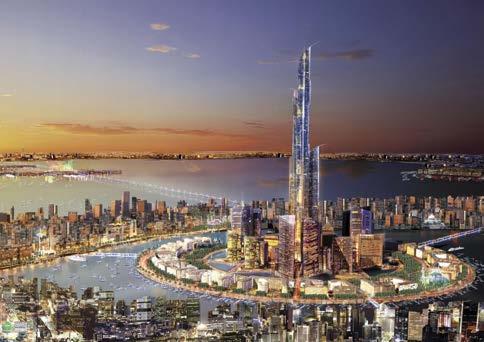
Development expected to attract massive FDI, create numerous jobs
Kuwait has unveiled plans to construct the tallest tower in the world, named Burj Mubarak Al-Kabir, with an estimated cost of $1.2 billion. The towering structure will soar to a height of 1,001 meters and will be located in the Subiya region of Kuwait City as part of a larger development initiative called Madinat Al-Hareer, meaning “City of Silk.”
Tamdeen Group, the real estate company behind the project, anticipates that the development will span 250 square kilometers and will include residential, commercial, and recreational amenities, as well as a vast central park. The Burj Mubarak Al-Kabir Tower, inspired by a traditional Islamic minaret, is set to become a new landmark in Kuwait
Spanish architect Santiago Calatrava will design the tower, and it is estimated to take approximately 25 years to complete. The tower will house a variety of facilities, such as a hotel, offices, apartments, observation decks, and a range of retail and dining options. This development is expected to attract a significant amount of foreign investment and create numerous job opportunities.
Overall, the Burj Mubarak Al-Kabir Tower is anticipated to become a popular tourist destination due to its unique design and impressive features.
The Middle East is home to some of the world’s most iconic skyscrapers, including the Burj Khalifa in Dubai, which stands at a towering height of 828 meters.
Saudi is planning to build a 2-kilometer-tall skyscraper in Riyadh that would become the world’s tallest building when built in 2030.
Oman launches new floating and mobile desalination plants
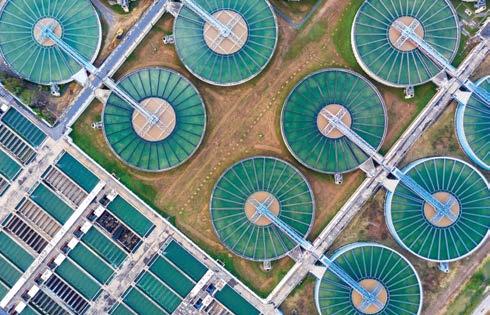
Facilities to benefit commercial and tourism activities, SMEs boost small and medium-sized enterprises. In March of last year, Nama launched a water delivery service in Wilayat Ibri for Hamra Al-Daroua, costing OMR121,425.
The Oman Water and Wastewater Services Company (Nama) has launched floating and mobile desalination plants in the Musandam Governorate, making them the first of their kind in the Middle East and Oman. These plants have the ability to conduct desalination, transmission, and distribution operations using advanced international technologies in reverse maturation. They will serve 70 marine villages in the governorate, making them a vital addition to the region. The use of floating desalination plants will support local crafts, promote commercial and tourism activities, and
Additionally, Nama inaugurated a water supply project from the Sohar desalination plant to Al Dhahirah Governorate. The project spans 230 kilometers and costs more than OMR150 million. It includes 15 tanks with a total storage capacity of 451,000 cubic meters, located in Sohar, Ibri, and Dhank. Furthermore, Nama has provided desalinated water to Jabal Al-Akhdar, one of the highest mountain peaks with an altitude of up to 3,000 meters above sea level. This project will supply 1.76 million liters of water per day to villages and areas in Jabal Akhdar State.
14 conomy middle east MAY 2023
short news
Saudi Arabia dominates $26.9B MENA debt market in Q1
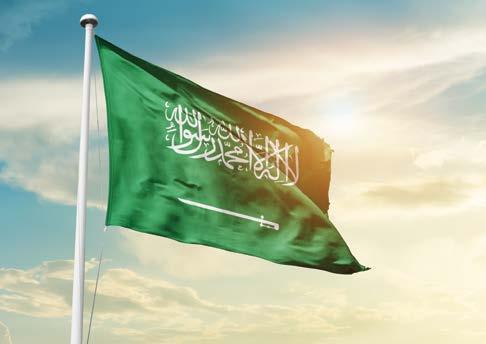
Quarter witnesses three-fold increase in debt issuances
Data from financial market data provider Refinitiv indicates that the value of MENA Q1 debt issuances nearly tripled during Q1 2023 to $26.9 billion.
Saudi Arabia led the way, accounting for 67 percent of total bond proceeds, followed by the UAE (17 percent), Morocco (9 percent), and Egypt (6 percent).
The MENA region issued both conventional and Islamic debt in the form of bonds, sukuk and Tawarruq, primarily in the energy, real estate and financial sectors.
This rise in debt issuances could be attributed to several factors, including low-interest rates, high liquidity in global markets and increased investor confidence in the region’s economic recovery following the COVID-19 pandemic.
Sukuk or Islamic bond issuances raised $6.3 billion in Q1 2023, marking a 57 percent year-on-year increase and a three-year high.
Financial issuers were responsible for the majority of sukuk issuances, with $4.8 billion, while government and agencies issued $1.5 billion worth, as per the analysis.
The largest MENA sukuk was IsDB Trust Services No. 2 SARL, issued by the financial sector and worth $2 billion. The Egyptian government’s sukuk was the second-largest at $1.5 billion, followed by the UAE’s DIB sukuk of $1 billion.
Citi led MENA bond issuances with $3.5 billion in proceeds and a 13 percent market share in Q1 2023. Emirates NBD PJSC topped the MENA Islamic bonds league table with $863.6.
Dubai medical tourism soars as 674,000 tourists spend AED992M in 2022
Surge reinforces Dubai’s emergence as leading industry hub
In 2022, Dubai witnessed significant growth in medical tourism with 674,000 medical tourists spending AED992 million, indicating a surge of AED262 million from 2021, as per a report issued by the Dubai Health Authority. Of the medical tourists, 39 percent were from Asian countries, 22 percent from Europe and the Commonwealth of Independent States, and 21 percent from Arab and Gulf Cooperation Council countries.

Director General of the Dubai Health Authority, His Excellency Awadh Seghayer Al Ketbi, stated that Dubai’s ability to offer patient-centered medical care of high quality has
accelerated its growth as a healthcare destination for the Arab, regional, and international populace. He added that Dubai’s strategic location, safety, outstanding infrastructure, and world-class amenities have contributed to its status as a medical tourism hub.
Dermatology (31 percent), dentistry (24 percent), and gynecology (18 percent) were the three specialties that attracted the highest number of medical tourists. Medical tourists from Asia, Europe, and Africa, including GCC and Arab countries, also visited Dubai for treatment in fields such as orthopedics, plastic surgery, ophthalmology, fertility treatments, hospitalization, and recovery.
Al Ketbi further added that Dubai’s aim to establish a world-class healthcare model with advanced technologies, smart solutions, and skilled professionals has contributed to its global competitiveness in the sector. He also emphasized the significant role played by the healthcare sector in improving people’s quality of life.
15 conomy middle east MAY 2023

cover story
From coral reefs to cultural treasures, sustainable experiences await
A luxurious, eco-friendly haven: The Red Sea's regenerative tourism takes center stage
John Pagano, Group Chief Executive
Officer,
Red Sea Global
As Saudi Arabia prepares to welcome its first guests to The Red Sea and AMAALA destinations, the anticipation is high for the luxurious and unique experiences that await visitors. From scenic islands and vibrant coral reefs to serpentine dunes and sleepy volcanoes, these destinations offer a blend of exotic experiences that are impossible to find anywhere else in the world. With a focus on prestigious hospitality and private settings, visitors and nature often merge to emerge more refined, renewed and reenergized for the betterment of the planet and mankind.
In this interview, Economy Middle East has the pleasure of speaking with John Pagano, the Group Chief Executive Officer of Red Sea Global, a vertically integrated real estate company with regenerative development projects along the Red Sea coast of Saudi Arabia. With over 35 years of international experience in the commercial property sector across Europe, North America and the Caribbean, Pagano is the perfect person to provide insight into the unique blend of luxury and sustainability that defines the Red Sea and AMAALA destinations.
RSG will open its first hotels at The Red Sea this year. What can potential first guests/tourists experience in terms of attractions at The Red Sea with the launch of the hospitality sector there?
An unforgettable experience! Visitors will indulge in unparalleled, sustainable luxury during their stay. They will be able to choose the experiences they want in diverse settings ranging from idyllic islands and vibrant coral reefs to dramatic dunescapes and dormant volcanoes.
We cater to every taste. Guests can enjoy a sumptuous sunset dinner on a private island after a day spent exploring one of the world’s few flourishing coral reefs. The wonders of our local marine ecosystem are easily accessible to divers, with almost 300 reef sites across the destination. These precious habitats are home to more than 280 different species of fish, not to mention the endangered Indian Ocean humpback dolphin and critically endangered Hawksbill sea turtle.
There is also no shortage of places for energetic visitors to explore on land. They can hike and scramble along cliffs, run on trails, go e-biking and gravel biking, and take conservation tours. At night, they can marvel at the stars in our dark skies, set to become one of the largest Dark Sky Reserves in the world.
For guests who are more interested in culture, The Red Sea has plenty for them to enjoy too. They can trace the Incense Trail of ancient traders or meet Saudi artisans and folklorists and learn first-hand about local customs and traditions.
This is just a flavor of what’s on offer. From diving classes and dugong-spotting to spa days and stargazing, The Red Sea has something for everyone.
What can you tell us about the hotels at The Red Sea and AMAALA in terms of planned hotel openings in the next two years: number of rooms, luxury hotel brands, rates, technology, F&B, amenities and the like?
We have partnered with some of the world’s most prestigious hotel brands to bring our vision of luxurious, regenerative tourism to life.
The Red Sea will welcome its first guests this year, with three hotels opening in the coming months: Six Senses Southern Dunes, St. Regis Red Sea Resort and Nujuma – A Ritz-Carlton Reserve. Together, these resorts will comprise 248 keys. Our other hotel brands at The Red Sea are just as prestigious: Grand Hyatt, Edition, Intercontinental, Fairmont, Rosewood, Miraval, Four Seasons, Raffles, Jumeirah, SLS and Faena. When we complete the destination’s first phase in 2024, it will be home to 16 hotels totaling 3,000 keys.
At AMAALA, our integrated wellness haven further north along the coast, we are building eight hotels with upward of 1,200 keys in the first phase of the Triple Bay development. We expect to welcome our first guests at AMAALA in 2024, and our hospitality partnerships there already include Clinique La Prairie, Jayasom and, most recently, Rosewood Hotels & Resorts.
Both destinations will offer outstanding dining and luxury retail options of the kind our discerning guests would expect. Underlying our visitor experience will be smart technologies that ensure the comfort and convenience of our guests while also maintaining our stringent standards for sustainability. Upon arrival at our eco-friendly airport, for example, guests won’t have to touch their bags until they reach their hotel rooms, thanks to our seamless baggage-handling technology.
We expect to welcome our first guests at AMAALA in 2024.
17 conomy middle east MAY 2023
Does your portfolio of projects expand beyond The Red Sea and AMAALA? If yes, what type of projects, funding and milestones can you share on these? What will these destinations contribute to the Saudi GDP in the years to come?
Our recent rebranding to Red Sea Global reflects our ambitions to expand beyond The Red Sea and AMAALA while fulfilling our mandate to set new standards of responsible development worldwide. We want to lead the way in making tourism a force for good. Hopefully, we will inspire others in the international industry to join us on this journey.
We understand that creating memorable travel experiences requires much more than just building a hotel, and our expanded portfolio includes the establishment of subsidiary brands that we believe will enhance the Kingdom’s tourism appeal. In February we introduced our water sports brand WAMA and diving brand Galaxea. Both brands will help us deliver the top-quality experiences that our guests expect. They are also proof of our evolution from a developer that not only creates world-class destinations but operates them too.
In addition to The Red Sea and AMAALA, we have almost a dozen other projects up and down the Red Sea coast that are under a feasibility study, entering the masterplan competition phase, or already under construction. We have proven our ability to deliver developments that are both responsible and visionary, and we look forward to enlarging our role in the Kingdom and eventually expanding beyond it. More details will follow soon on these projects.
We are confident that our destinations will be a catalyst for Saudi Arabia’s tourism industry. We anticipate that The Red Sea and AMAALA together will contribute upwards of 33 billion riyals to the nation’s annual GDP and generate 120,000 jobs, most of which will go to talented Saudi men and women from across the Kingdom.
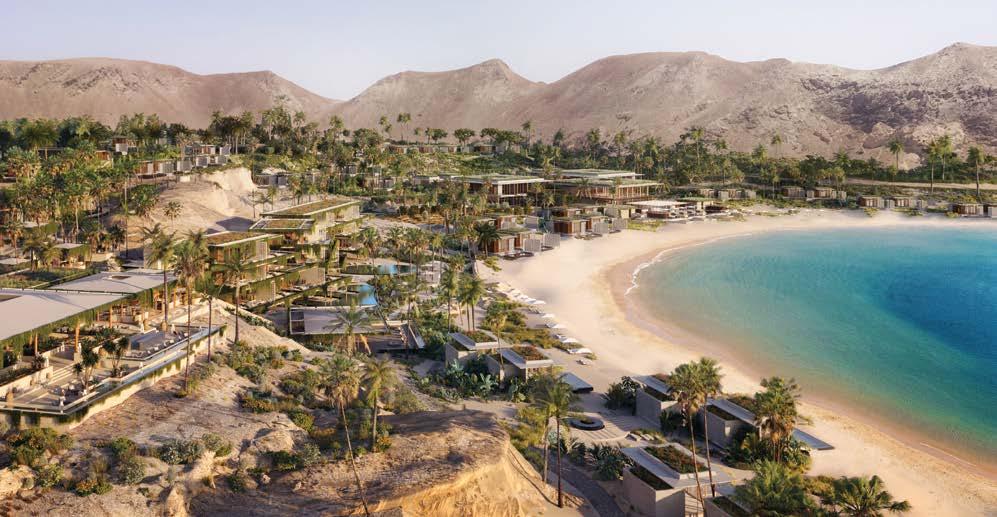
When it comes to funding and specialized expertise, have you partnered or are you looking to partner with companies to create JV deals? What specific areas of construction are you looking at and what type of companies are you seeking deals with?
We are always open to teaming up with like-minded partners and are optimistic about the interest we have received so far from both within and outside the Kingdom. We select our partners based on shared values: Like us, the brands we have partnered with all seek to do better for people and planet. This mutual commitment is evident in our hotel management agreements with the top-tier brands I mentioned earlier.
Another example of collaboration in our pioneering approach to responsible development is our selection of a consortium led by ACWA Power to deliver The Red Sea’s entire utilities network. Our two main solar parks, taken together, are more than 93 percent complete. Once the consortium finishes installing solar panels and the world’s biggest battery storage facility, The Red Sea will operate exclusively on renewable energy, 24 hours a day, saving some 500,000 tons of carbon emissions annually.
18 conomy middle east MAY 2023
cover story
Jayasom, AMAALA
Last year we formed our first joint venture, with Al Mutlaq Real Estate Investment Company to develop Jumeirah The Red Sea, a 159-key luxury resort on The Red Sea’s Shura Island. We’ve also partnered with firms seeking innovative solutions to specific environmental and operational challenges. We’re working with ZeroAvia, for instance, to develop hydrogen-powered seaplanes.
As for funding, we are owned by Saudi Arabia’s Public Investment Fund and are fully funded. Yet, we speak continually to the regional and global investment community about opportunities to support our expanding project portfolio as long-term partners, as in the case of our JV with Al Mutlaq.
To this end, RSG secured the world’s first-ever riyal-denominated Green Finance credit facility. We closed on a facility of SAR14.12 billion ($3.76 billion) with four Saudi banks and with HSBC as the Green Loan Coordinator.
Our partnerships are testament to the unique advantages that investors see in what RSG is doing. We are proud to attract investment that benefits not only our destinations but also the Kingdom more broadly.
Today you are leading the creation of unique eco-luxury, sustainable, regenerative global tourist destinations. How do you ensure that tourists leave the destinations in better shape than when they arrived?
As one of the world’s most responsible developers, we pride ourselves on promoting regenerative tourism. We do this not only in our own operations but by working closely with our partners and guests to ensure that they act on these principles too.
By deciding to visit us, guests will already be expressing a preference for sustainability. The Red Sea will be the world’s largest tourist destination powered solely by renewable energy, 24/7. Both The Red Sea and AMAALA will rely 100 percent on renewables across their first phases, from hotels to airports and mobility networks.

Our guests will appreciate that we have designed our resorts with the lightest possible touch on the local environment, blending our built structures with their natural settings through thoughtful and innovative architecture. Both The Red Sea and AMAALA will also ban single-use plastics and send zero waste to landfill once they are fully operational.
We will offer unique activities that keep sustainability and regeneration at the heart of the guest experience. All our activities will encourage positive, eco-friendly behaviors. Our Galaxea subsidiary, for example, will oversee all diving to protect corals from possible harm. We plan to supply coral-friendly sun-protection creams, and for hikers, we will provide wayfinding programs that guide them to enjoy the local terrain without damaging sensitive habitats. We will announce more of these sustainable guest experiences in the coming months.
We are going even further to protect our precious habitats against potential stress from over-tourism. We calculated the environmental carrying capacity of each destination. As a result, we are capping the annual number of visitors to one million at The Red Sea and 500,000 at AMAALA.
These lucky visitors will be able to experience unparalleled luxury while discovering more about how we’re achieving positive change. For instance, they will have opportunities to learn first-hand about our success in gardening corals, planting mangrove seedlings, and rescuing and rehabilitating injured sea turtles. Likewise, they will be able to
19 conomy middle east MAY 2023
The Red Sea will be the world's largest tourist destination powered solely by renewable energy.
engage with the local community, enjoying Saudi Arabia’s famed hospitality and appreciating how tourism can benefit people from a socio-economic standpoint.
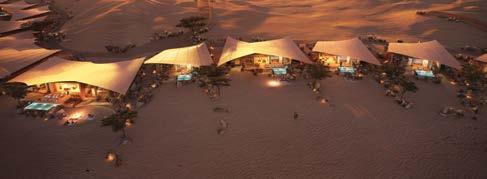
We believe that visitors will come away sharing our sense of responsibility as caretakers of our planet, practicing sustainability in their everyday lives and becoming advocates for regenerative tourism.
What challenges did you face from master planning to financing, construction and built asset management, and how did you overcome them?
We set out to develop unrivalled tourism destinations that combine the heights of luxury with benefits for the environment. As you can probably imagine, this hasn’t been a journey without challenges.
Tourism as an industry is not renowned for sustainability, not least because of its association with air travel, which accounts for around 2.5 percent of global carbon emissions. We decided from the outset to take a different approach to sustainability. Instead of merely maintaining the environment as we found it, we wanted to find ways to actively enhance it. This is what we mean by regenerative tourism, and it marks a radical change for our industry.
stainless-steel, over-water villas at Sheybarah Island – they were built in the UAE and shipped to us ready-made for installation. We’ve already placed 17 of the 38 over-water villas planned for this one-of-a-kind resort.
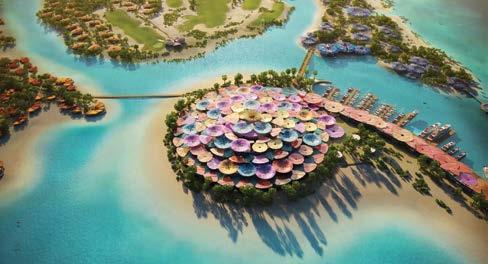
We’ve also had to change our approach to contracting due to the tremendous demand for construction in the local Saudi market. We’re now procuring package contractors, working with smaller and medium-sized construction companies. We are also actively seeking to attract new contractors to come and establish themselves in the Kingdom through international roadshows that highlight the huge opportunities in the country. The key is that we want them to come and create new opportunities for Saudis as well as help deliver Vision 2030.
Each of these situations shows how creative thinking has helped us turn challenges into opportunities.
Saudi MCIT and Huawei sign ICT MOU
We brought in scientists before we stuck our first shovel in the ground. We carried out a marine spatial planning simulation for a lagoon at the heart of our project site. We virtually sectioned off 2,081 square kilometers of this lagoon into a grid and assigned a conservation value to each block of this virtual grid. It was the largest assessment of its kind ever undertaken.
Our research team then drew up a list of actions to help ease pressure on the lagoon environment and identified islands with a lower conservation value. Based on their findings, we decided to develop only 22 of our 92 islands, leaving the other three-quarters of them untouched, and set our goal of achieving a 30 percent net conservation benefit by 2040. We later surveyed the wildlife populations and habitats of 200 kilometers of coastline. It took us 11 months; no private developer has ever conducted a bigger environmental survey. These are just two examples of the lengths we’ve gone to. Another challenge for us, as a greenfield developer, is that we have had to install all the infrastructure ourselves, a mammoth task compared to simply building hotels. However, we seized on this as an opportunity; to minimize disruptions to local ecosystems and communities, we’re manufacturing as much as possible off-site. A good example of this is our
Both projects carry huge sustainability themes and targets. Can you summarize those and explain the tie-up with health and wellness, not only for the ecosystem and climate but also personal ones on tourist and resident levels.
Our main sustainability target, which I touched on above, is to deliver a 30 percent net conservation benefit by 2040 across AMAALA and The Red Sea. We will achieve this by enhancing key habitats that are crucial to biodiversity and by applying stringent environmental regulations.
We are already well on track to achieve net carbon neutrality, largely because we will power both destinations solely by renewable energy in their first phases, coupled with a smart and sustainable mobility network powered initially by electricity. We are also gardening corals, using innovative floating nurseries, so that we can enhance our reefs. This matters as coral reefs occupy 0.2 percent of the ocean floor but are home to 25 percent of all marine life.
We aim to plant and restore as many as 50 million mangrove trees across all our destinations. Mangroves shelter a staggering diversity of wildlife, and some mangrove forests can sequester up to 30 times more carbon than tropical rainforests.
To monitor progress toward our 30 percent target, we publish annual sustainability reports that show where we are succeeding and where we need to work harder.
20 conomy middle east MAY 2023 cover story
Six Senses Southern Dunes, The Red Sea
Aerial View of Coral Bloom Concept
What’s good for the planet is good for people too. Our visitors will find ample opportunities to connect, and re-connect, with nature. AMAALA, our wellness haven, is nestled between mountains and tranquil waters and will be an ideal place for guests to slow down and recharge. AMAALA will deliver an exceptional wellness offering to guests and residents alike, including a Clinique La Prairie Health Resort providing cryotherapy, hyperbaric suites, IV infusions, and next-generation therapies.
Do you see Red Sea Global’s destinations as opening the floodgates for a major influx into Saudi Arabia as a tourism and hospitality destination?
Red Sea Global supports the growth of Saudi Arabia’s tourism industry in line with Vision 2030. We aim to play a key role in the expansion of the industry from the current contribution of 3 percent of GDP to a targeted 10 percent by the end of the decade.
We are helping to put Saudi Arabia on the global tourism map. AMAALA and The Red Sea are hidden gems, and the generosity of the Saudi people makes them all the more attractive. I’ve already mentioned many of the offerings at our destinations, but we also have a geographical advantage: Our location on the Kingdom’s Red Sea coast is within eight-hours’ flying time for 85 percent of the world’s population. Our average annual temperature of 25 degrees makes the trip well worth it for sun-seeking travelers.
Saudi Arabia already attracts a great many visitors. The Kingdom welcomed 93.5 million foreign and domestic tourists last year, and they spent a total of SAR185 billion ($50 billion). Travelers to the Kingdom have traditionally been mostly religious pilgrims, but a growing number of people now visit for other reasons. The introduction of tourist visas in 2019 has made a big difference. The country has opened its doors to the world.
Saudi Arabia is just beginning to unlock its vast potential as
a global tourism destination. As more people overseas learn about the Kingdom and all it has to offer, I expect to see visitor numbers rise dramatically. The Red Sea and AMAALA – by setting new standards of excellence for regenerative tourism – will be a powerful engine driving this growth.

Riyadh Air is a new airline that will cater to tourism growth. What else in terms of capacity building, infrastructure development and technological facilities does the kingdom need to meet future tourism demand?
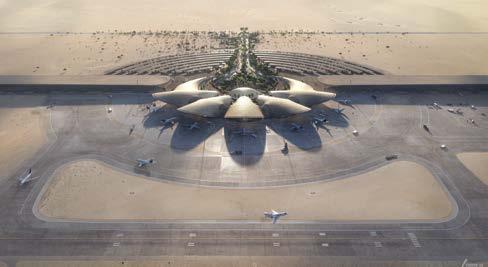
Vision 2030 has been a catalyst for rapid growth in tourism, in terms of visitor numbers and spending as well as work completed or underway to improve the necessary infrastructure. With new destinations opening their doors, such as Diriyah Gate and Al Ula, and more projects close to opening – like our resorts at The Red Sea – the progress is constant. It is an exciting time to be in the Kingdom.
Red Sea Global is doing its part to build capacity for soft skills in the nation’s hospitality industry too. We have launched several programs to train young Saudis, such as our Elite Graduate Program, now in its fourth year. Through the EGP, we hire Saudi university graduates and provide on-the-job training, putting them to work alongside the best and brightest people in their respective fields. We have enrolled 180 EGP Elites so far. We’ve also funded scholarships for 170 students pursuing the University of Prince Mugrin Bachelor’s degree in international hospitality, a program accredited by the prestigious Ecole hôtelière de Lausanne. We run a separate program with the University of Tabuk, teaching hospitality skills to 100 students. And we’re providing vocational training for 700 hospitality, airport and technical services workers.
Can Saudi Arabia reach a point where a wealth of unique and sustainable project portfolios allows it to export its tourism concepts in terms of strategy, planning, building and manpower expertise?
With the projects in our own portfolio, we certainly aim to set new international standards in the development of luxury tourism destinations. Our brand communicates our willingness and aspiration to one day apply these standards on a global stage – and inspire others in our business to join us in putting people and planet first.
For now, we remain focused on doing our best to nurture Saudi Arabia’s nascent tourism industry. We will continue to deliver on our commitments, and we look forward to fulfilling our role as a lynchpin of Vision 2030.
21 conomy middle east MAY 2023
Our location on the Kingdom's Red Sea coast is within eight-hours' flying time for 85 percent of the world's population.
The Red Sea International Airport aerial
A colourful underwater world - Al Wajh Lagoon
DET: The driving force behind Dubai's tourism success
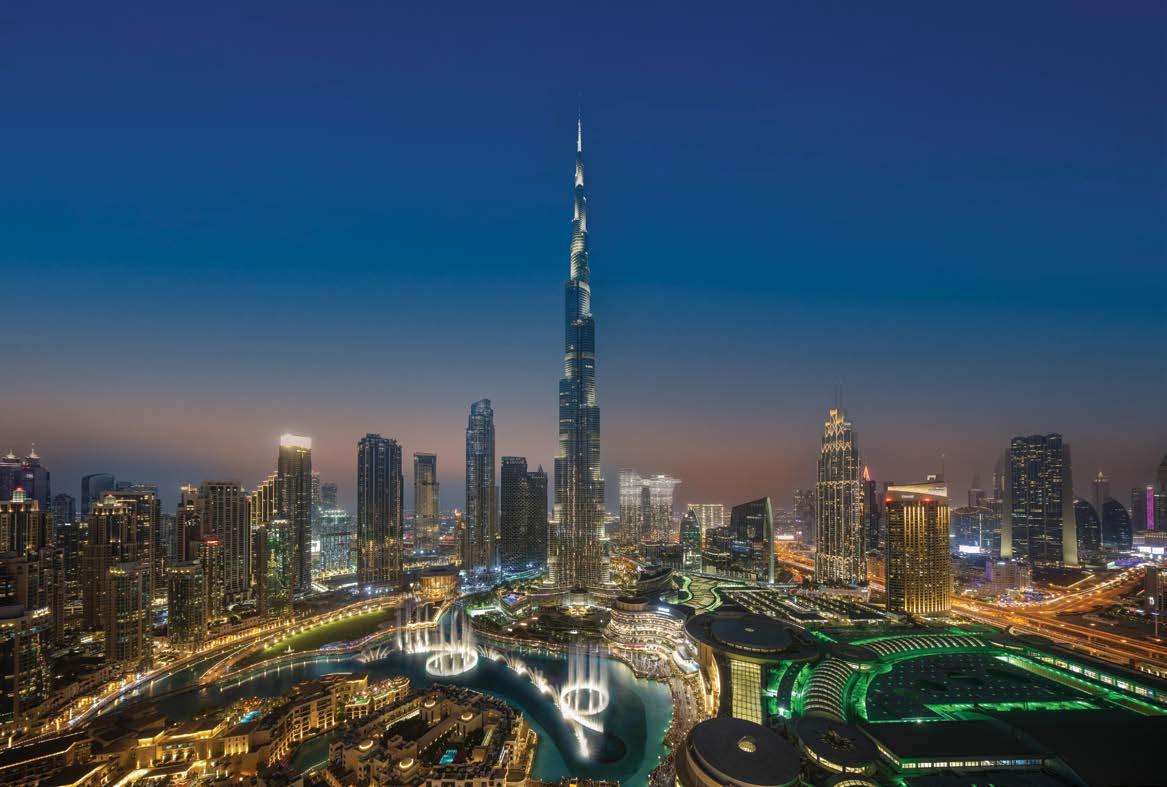
Sustainability, gastronomy, trade and technology among key growth pillars
With the ultimate vision of making Dubai, the world’s leading commercial centre, investment hub and tourism destination, Dubai’s Department of Economy and Tourism (DET) is mandated to support the Government in positioning the emirate as a major hub for global economy and tourism, and in boosting the city’s economic and tourism competitiveness indicators.
DET is the principal authority for the planning, supervision, development and marketing of the emirate’s economic and tourism sectors. With Dubai being crowned the top global destination for two consecutive years in the Tripadvisor Travellers’ Choice Awards 2023, it aligns with the goals of the newly launched Dubai Economic Agenda, D33 to further consolidate Dubai’s position as one of the top three global cities.
In a recent interview with Economy Middle East, H.E. Issam Kazim, CEO of the Dubai Corporation for Tourism & Commerce Marketing (DCTCM), part of DET, discussed the numerous strategies that have contributed to Dubai’s achievements in this vital sector.
conomy middle east MAY 2023
Hospitality & Tourism
How do you ensure that Dubai stays competitive in the global tourism market, and what are some of the key strategies you have implemented to achieve this?

In 2022, Dubai witnessed a remarkable resurgence in tourism, with the city welcoming 14.36 million international overnight visitors. This figure surpassed both global and regional benchmarks for recovery, as evidenced by data published by the U.N. World Tourism Organisation. The strong growth in international visitors can be attributed to the strategic and creative initiatives implemented under the guidance of His Highness, Sheikh Mohammed bin Rashid Al Maktoum, UAE Vice President and Prime Minister and Ruler of Dubai. These initiatives aim to ensure that Dubai’s tourism sector remains on track to become the world’s most visited and revisited destination.
Dubai’s ability to provide a diverse range of offerings that cater to travellers of varying budgets and preferences has made it a top destination, earning it the top spot in the Tripadvisor Travellers’ Choice Awards for 2022 and 2023. This accolade marks only the second time in history that a city has won this prestigious award for two consecutive years.
As we work toward accelerating momentum across our tourism sector in 2023 and beyond, our strategy to increase the competitiveness and global appeal of the destination will be aligned with the goals of the Dubai Economic Agenda, D33, to further consolidate Dubai’s position as one of the top three global cities.
We will continue to focus on a diversified approach to markets; continuous international outreach to global audiences through celebrity and digital first state-of-the-art campaigns, keeping the city top-ofmind among global travellers and showcasing the city’s multi-faceted tourism offering; highlighting Dubai’s position as an international MICE and events hub, as well as further strengthening cooperation with our stakeholders and partners.
The success of our strategies will be largely built around the pillars of sustainability, gastronomy, trade and
technology.
With 2023 declared as the UAE’s “Year of Sustainability,” this is indeed a landmark year for us, particularly as Dubai is preparing to host COP28, the U.N. Climate Change Conference. We will look at successfully balancing sustainability and destination strategies to incorporate sustainable practices into all aspects of the visitor experience while also offering unique and compelling experiences to make Dubai the best city in the world to visit, live in and work.
Our Gastronomy Always on Campaign to position Dubai as a global hub for food tourism will be regularly enhanced, as we continue to drive growth across the hospitality and F&B sector based on the four pillars of diversity, value for money, authenticity and experiential. This builds on the launch of the inaugural edition of Michelin Guide Dubai. A total of 69 restaurants in the city were included in the guide, with two restaurants awarded two Michelin Stars and nine restaurants awarded one Michelin Star, while 14 others received a Bib Gourmand.
Dubai’s investment in infrastructure and support systems for entrepreneurs has made it a preferred destination for start-ups, global talent, and entrepreneurs. The Intelak Hub, Dubai’s aviation and tourismfocused start-up platform, is just one example of our strategic investment in and commitment to revitalizing entrepreneurship in the city. We are dedicated to building a worldclass entrepreneurial ecosystem that
encourages growth and innovation. Dubai has also undergone a significant transformation in its legal framework, reflecting our commitment to building a competitive and productive society that is on par with other global economic hubs.
Dubai is committed to always offering something new and unique for the discerning international traveller. These developments will be largely through the Dubai 2040 Urban Master Plan, which includes the expansion of tourism attractions by over 100 percent, enabling new areas for investment, as we increase the diversity of attractions and experiences for residents and visitors. We will also offer alternative pathways to growth facilitated by a series of reforms and regulatory enablers that have eased barriers to entry and paved the way for long-term affiliation with the city through initiatives like the Golden Visa, five-year Multi Entry Visa, and Virtual Working and Retire in Dubai programs. These initiatives have also further enhanced Dubai’s pro-
23 conomy middle east MAY 2023
H.E. Issam Kazim, CEO, Dubai Corporation for Tourism & Commerce Marketing (DCTCM)
business environment to attract multinationals, family offices, global talent, entrepreneurs, innovators and investors.

We will continue to promote Dubai to the world across all segments including ecotourism, food tourism, wellness tourism, cruise tourism, sports tourism as well as a hub for destination weddings and more. We will look beyond traditional tourism to create alternative routes to attract visitors. Ultimately, our goal is to strengthen our existing and emerging markets, as well as identify new growth opportunities at home and overseas, while creating unique value and always providing the best guest experience.
Can you share with us some of the major challenges and opportunities currently facing the tourism industry in Dubai?
Challenges are nothing new to Dubai and as a city we have tackled them head-on, and even transformed them into opportunities. The pandemic was undoubtedly an unprecedented challenge but thanks to our decisive leadership and their guidance combined with Dubai’s resilience and ability to be agile and adapt to changes, we were able to swiftly and successfully navigate our way out and put the industry back on track. We are now harnessing the benefits of the strategic measures that were taken during tough times, having gained first mover advantage on many fronts. One of the most significant strategies at the time was revitalising the domestic tourism market, creating numerous growth opportunities for the hospitality sector.
We have recognized that the way forward is to open up new avenues for growth beyond traditional tourism, generating more opportunities that could further diversify our offering and reinforce Dubai’s position as the first-choice destination for global travellers. As we look forward to a brighter tomorrow, sustainability is increasingly becoming both an opportunity and a key driver for growth as more and more travellers are seeking out sustainable
destinations. Sustainability is embedded at the heart of the city’s development strategy, and with the stepping up of activities under our Dubai Sustainable Tourism initiative, we are ready to cater to global travellers who are driven by the desire to seek authentic local experiences that promote sustainable practices.
DET has recently announced the relaunch of the Carbon Calculator tool that measures the carbon footprint within Dubai’s hospitality sector. What more can you tell us about this?
Since January 2017, the Carbon Calculator has been measuring the carbon footprint of hotels across Dubai in real-time, as a part of our Dubai Sustainable Tourism initiative, which supports the UAE Net Zero 2050 strategy.
The Carbon Calculator helps hotel establishments identify and manage their energy consumption. On a monthly basis, hotels are mandated to submit their consumption of nine carbon emission sources, including: electricity, water, district cooling, liquefied petroleum gas, landfill waste, recycled waste, petrol, diesel and refrigerants. This information is aggregated and analyzed to provide valuable industry insights on the sector’s collective carbon footprint. The data provided helps hotels and resorts implement initiatives to efficiently manage their carbon footprint in line with the 19 Sustainability Requirements these establishments are mandated to abide by, establishing a baseline across hotels in Dubai and unify hotels’ environmental practices. Our pioneering Dubai Can initiative, which promotes the use of reusable bottles and encourages residents and visitors
to refill, has successfully reduced the use of an equivalent of more than 7 million 500 ml single-use plastic water bottles within a year since its launch in February 2022.
Sustainable tourism practices are critical to the success of the tourism industry as they aim to minimize any adverse impact on the environment to ensure that the destination remains attractive to visitors. Sustainable tourism practices also promote social responsibility, ensuring that tourism benefits local communities and respects their culture and way of life, as well as encouraging more people to visit and re-visit the destination.
How does DET collaborate with other government entities and private sector partners to promote tourism in Dubai?
The extraordinary success that Dubai’s tourism sector continues to enjoy is a testament to the unique spirit of collaboration between the government and private sectors that permeates throughout our industry, allowing us to create a unified approach to showcasing Dubai as a must-visit destination.
This harmonious alignment between our Department, stakeholders and partners has enabled us to leverage our collective strengths, resources, and expertise to work toward a common goal of creating an exceptional tourism experience for all. This has ensured that all are aligned with Dubai’s global campaigns and initiatives
24 conomy middle east MAY 2023
Hospitality & Tourism
Dubai Frame
and are well placed and prepared to promote the city effectively in international markets. The future of tourism lies in our ability to adapt to evolving market trends and changing consumer preferences. That is why we are committed to continuously liaising with our stakeholders and over 3,000 global partners to keep pace with new developments and provide regular destination updates to ensure Dubai remains top-of-mind among global travellers.
How important is digital marketing and technology in the tourism industry, and what role does DET play in leveraging these tools to promote Dubai as a destination?
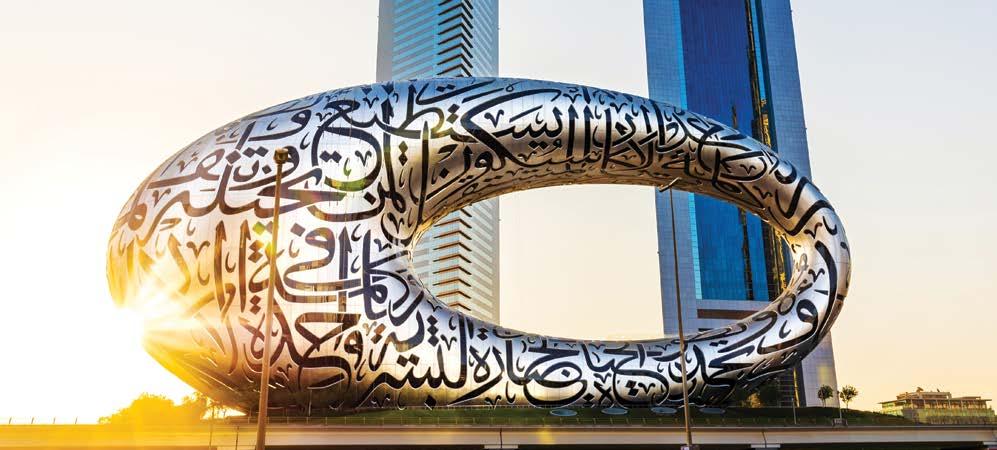
Inspired by the vision of His Highness
Sheikh Mohammed bin Rashid Al Maktoum to position Dubai as a global city at the forefront of innovation and technology, we have constantly rolled out initiatives to promote the destination across digital platforms. Intelak Hub is a testament to our focus on technology and innovation to create a transformative experience across the tourism ecosystem. It was established as part of an integrated strategy to position Dubai as the most sought-after destination for
innovators, talents, entrepreneurs and investors. Guided by its founders – the Emirates Group, Dubai’s Department of Economy and Tourism, Accenture and Microsoft – Intelak Hub is committed to supporting a cohort of innovative start-ups with mentorship and opportunities to enable them to grow and scale their business.
Dubai has a world-class physical and digital infrastructure, offering entrepreneurs and SMEs a platform for ease of set up and scale, as well as allowing companies in the travel, tourism and hospitality sectors to provide state-of-the-art systems and services across tourism touchpoints in the city.
Digital marketing has become increasingly important in the travel cycle as consumers rely heavily on online research and booking platforms. Recognizing this strategic shift, Dubai has placed significant emphasis on its mobile first, digital first agenda, customizing our visitor experience for travellers from each source market based on the audience mix and segment preferences. One of the strategies employed by Dubai is the use of innovative global campaigns like Dubai Presents to highlight the city’s multifaceted appeal. The Dubai Presents campaign comprises a
series of short video films featuring Hollywood stars and set against some of Dubai’s most iconic landmarks and hidden locations.
Dubai has pioneered innovative, data-driven digital marketing communications and accelerated the use of these platforms and remote campaigns during the pandemic to position itself as a safe destination for global travellers and sustain its international appeal, presenting the city as the perfect holiday getaway for tourists when it is safe for them to travel. Dubai has also partnered with global technology and internet leaders and digital platforms like Microsoft, Google and Snapchat to raise destination awareness in a creative way.
To further raise awareness of the destination, Dubai embraces data, analytics, and disruptive innovation to stay abreast of consumers’ rapidly evolving needs. The city utilizes a range of social media channels, including Facebook, Instagram, YouTube and Twitter, to reach its target audiences. At the core of its internet strategy is the region’s most advanced destination website, Visit Dubai, a content-rich ecosystem that showcases the city’s offerings and serves as a valuable resource for visitors.
25 conomy middle east MAY 2023
Museum of the Future
Hilton: Focus on growth, workplace culture and ESG strategy
Hospitality giant unlocks region’s potential as it doubles in size and multiplies experiences
Hilton, a leading hospitality giant, has established itself as a brand that caters to the needs of guests from all walks of life, for any length of stay or occasion, across the globe.
In 2022, with travel bouncing back from the pandemic, Hilton’s 400,000 strong team welcomed almost 200 million guests to their hotels globally. This impressive growth has led to the company’s expansion plans, with Hilton set to double its size in the region.
Recently, Jochem-Jan Sleiffer, the President of Middle East, Africa & Türkiye at Hilton, shared his insights on this expansion with Economy Middle East in the following interview.
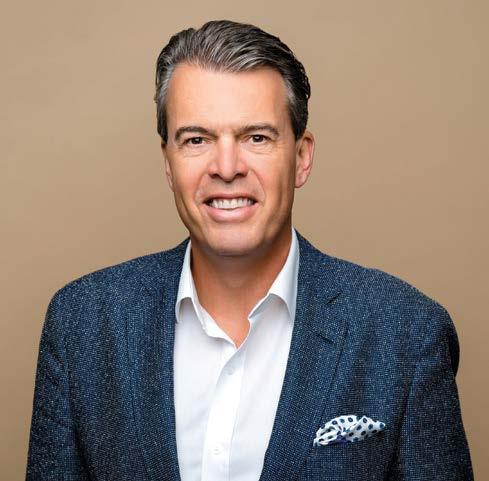

conomy middle east MAY 2023
Hospitality & Tourism
Jochem-Jan Sleiffer, President of Middle East, Africa & Türkiye, Hilton
Waldorf Astoria Lusail, Doha
After assuming your current position in January 2020, what agenda did you set for your portfolio at Hilton in the Middle East, Africa & Turkiye?
I assumed the leadership role for MEA&T with a clear goal to unlock the immense potential of the region. It gives me great pride to have guided our team through a period of significant challenges and achievements. As travel resumes in the Middle East, Hilton is poised to contribute to a new era of flourishing tourism in the region, with our proven strategy centered on workplace culture, growth, and ESG.
Our achievements include consistently ranking among the top workplaces in the region, as recognized by Great Place to Work. This achievement is a testament to our team members’ loyalty and dedication to Hilton, which is rooted in our culture of promoting diversity, inclusion, and well-being.
In spite of the challenges posed by the pandemic, we successfully launched several marquee properties in 2020. These included the re-entry of Hilton into the UAE capital through Conrad Abu Dhabi Etihad Towers and the debut of our LXR brand in Türkiye with Susona Bodrum, LXR Hotels & Resorts. Additionally, in 2021, we proudly introduced The WB™ Abu Dhabi, Curio Collection by Hilton, the world’s first Warner Bros. hotel.
Our growth continues as we plan to double our presence across the region. ESG also continues to be at the center of our regional strategy, with a focus on creating positive environmental and social impact across our operations, supply chain, and communities.
What key challenges and advantages does your current region present compared to Europe when it comes to tourism and business travel?
The Middle East’s strategic location between Europe, Asia, and Africa makes it an ideal hub for international travel. Additionally, the region boasts a vibrant cultural heritage, iconic landmarks, and a wide range of attractions that appeal to both leisure and business travelers. In 2022, the UNWTO reported that over 900 million tourists travelled
internationally, and it’s encouraging to see that both the Middle East and Europe had a strong performance. The Middle East had the highest relative increase, with arrivals reaching 83 percent of pre-pandemic numbers, while Europe reached almost 80 percent of pre-pandemic levels.
Is Hilton set to double its portfolio in the region?
Hilton plans to more than double its presence in the Middle East over the next three to five years, with a pipeline of over 90 hotels and 23,000 rooms. In 2022, the company made significant progress toward this goal with several noteworthy openings. In the GCC, Hilton opened the Waldorf Astoria in Kuwait and Qatar, while the flagship Hilton Hotels & Resorts brand continued to expand across the region, including the Hilton Dubai Palm Jumeirah in the UAE. Additionally, Qatar saw the opening of Maysan Doha and Katara Hills Doha – both under the LXR Hotels & Resorts brand – as well as Embassy Suites by Hilton Doha Old Town and Fuwairit Kite Beach, Tapestry Collection by Hilton.
What do you estimate demand for luxury hospitality to be and from where?
As travel demand continues to rise, the luxury hotel sector is expected to maintain its strength. The GCC countries, namely the UAE, Saudi Arabia, Kuwait, Qatar, Bahrain and Oman, are major players in the Middle East’s luxury hospitality market.
What talent recruitment strategy will you engage in to overcome potential staff shortages, at least in leadership hospitality positions?
As a people-focused business, we believe that when our Team Members are at their best personally and professionally, they can better care for our guests and one another. From life-changing travel opportunities and career acceleration programs to wellbeing platforms such as Thrive@Hilton, we work hard to make Hilton a positive
and empowering workplace. Hilton also offers a compelling travel discount program, Go Hilton, for Team Members, their families and friends, as well as ongoing training and apprenticeship programs, to help all Team Members achieve their career aspirations.
Can you share details about Hilton’s technology platforms in the region, including booking and poolside services? Also, could you discuss Hilton’s future technology investments and focus areas?
In recent years, building on our legacy of innovation, we have introduced several technology advancements that improve the guest experience. Our Digital Key Share, which is a first for a major hospitality company, enables multiple guests to securely access their room’s Digital Key via the Hilton Honors app on their smartphones. Additionally, we now offer automatic room upgrades for Gold and Diamond Members 72 hours before arrival, and we have launched Confirmed Connecting Rooms, an industry-leading booking experience that allows guests to easily book and confirm at least two connecting rooms.
What is the industry outlook in the region? What threats does it face?
The region’s recovery after the pandemic has been remarkable, thanks to excellent leadership from the authorities. The UAE and Middle East were the first in the world to host major events again, including FIFA World Cup Qatar 2022, Expo Dubai 2020, and world-renowned sports and music events in KSA. This year, we are eagerly anticipating COP 28 being held in the UAE.
According to the UNWTO, the Middle East is on track to recover fully this year, with international tourist arrivals reaching pre-pandemic levels. The region is experiencing a new era of travel, boosted by global recognition such as Dubai’s selection as the world’s most popular destination in the 2022 Tripadvisor Travellers’ Choice Awards.
27 conomy middle east MAY 2023
Check into a world of personalization, empathy, and adventure
Authentic humancentric service at the core of Four Seasons philosophy
Four Seasons Hotels and Resorts is renowned for providing an exceptional experience to guests, no matter the weather. With its commitment to selflessness and timeless elegance, the luxury hospitality leader offers personalized and unique services that surpass expectations. However, there’s much more to this hospitality giant. Simon Casson, President of Hotel Operations for Europe, Middle East, and Africa at Four Seasons, has granted Economy Middle East exclusive access to gain insight into the inner workings of this industry titan.
 Simon Casson, President of Hotel Operations for Europe, Middle East, and Africa, Four Seasons
Simon Casson, President of Hotel Operations for Europe, Middle East, and Africa, Four Seasons
Hospitality & Tourism
How does Four Seasons ensure it provides exceptional experiences and services that cater to the unique needs of each guest?
At Four Seasons, we strive to create personalized experiences that cater to each customer’s unique needs. We accomplish this by empowering our team to act on the spot, provide spontaneous care, and anticipate needs before they’re expressed. Our culture is based on “The Golden Rule” – treating others as we’d like to be treated. This value is ingrained in every touchpoint and interaction, both in the EMEA region and globally. While we continuously innovate and adapt to changing preferences, the essence of our brand – human-centric service – remains the cornerstone of the exceptional experiences Four Seasons is known for. To me, authentic service is the epitome of luxury.
What are some emerging, exciting trends in the hospitality industry?
Our guests’ expectations have shifted from merely visiting new places to connecting with the world on a more profound level. This desire for authentic experiences is especially evident among Millennial and Gen Z travelers, who are drawn to brands that align with their values
Today’s guests prioritize experiences over materialism and value flexible, personalized service as the hallmark of true luxury. The empathy we infuse into our service creates a sense of belonging that resonates deeply with our guests. This personalized care was reflected in the launch of our new creative brand campaign last year, as we continue to innovate and provide unique ways for guests to engage with the world. From bespoke adventures on our popular Four Seasons Private Jet itineraries to the upcoming launch of Four Seasons Yachts, we constantly strive to elevate the guest experience through innovative approaches to hospitality. Expectations are evolving rapidly, particularly among techsavvy guests for whom time is a precious commodity. While technology enhances the guest experience, we remain committed to providing our guests with warm and personable interactions. That’s why we developed the ‘Chat’ function on our Four Seasons Application – a 100 percent people-powered feature designed to complement rather than replace human interactions.
What initiatives has Four Seasons implemented to reduce its environmental impact?
At Four Seasons, our unwavering commitment to supporting our communities and environment is evident through our comprehensive ESG program. Our program revolves around two main pillars, namely “Planet” and “People,” and is aligned with the United Nations’ Sustainable Development Goals to ensure clear objectives. We constantly evaluate and mitigate climate risks by implementing measures such as using renewable or carbon-free energy sources.
We’ve implemented energy-saving controls for guest rooms and building systems, launched water conservation measures
and recycling programs, installed electric vehicle charging stations, and introduced plant-based menus at our Hotels and Resorts worldwide.
In addition, Four Seasons has taken measures to preserve biodiversity and enhance local ecosystems within the places where we operate. Our goal is to integrate sustainability into every aspect of our operations and inspire others to make a positive impact.
Four Seasons recently announced a resort that will open in Saudi Arabia’s Red Sea project. Can you tell us more about it?
Our newest property at The Red Sea development will be one of the first resorts in Saudi Arabia’s master-planned development, seamlessly integrating beachside travel with the Kingdom’s natural and cultural wonders. The Resort will be situated on Shura Island, which will also feature a yacht marina, lifestyle and leisure facilities, retail outlets, and an 18hole golf course.
The Resort will include approximately 150 rooms and suites, each providing unobstructed vistas of the picturesque beaches and crystal-clear waters surrounding the island. With six restaurant and lounge outlets, families can enjoy the dedicated Kids All Seasons area while indulging in a wide range of dining options. Additionally, the resort will offer a deluxe spa, three outdoor pools, and two separate beach areas to cater to every guest’s preferences.
Our Red Sea resort will join growing collection of properties in the Kingdom, including Four Seasons Hotel Riyadh at Kingdom Centre, along with upcoming projects in Diriyah and Jeddah at the Corniche.
What advice do you have for aspiring hospitality professionals who are just starting out in the industry?
My advice would be to have a clear understanding of yourself and where your passions truly lie. Early in my career, I came to realize that the people who rose quickly within Four Seasons were not only the most talented in their fields, but also the best at developing their sense of self. Ask yourself what you’re interested in and what motivates you. These are crucial questions to consider.
Once you have established a solid foundation and believe the industry is for you, you then need to be fully committed to working hard with a company aligned with your personal values and in an environment where you can develop and flourish. Ever since my journey began with the company in 1989, the culture at Four Seasons has been a constant source of inspiration for me.
What is your vision for the future of the hospitality industry in the EMEA region?
Travel and tourism is playing a central role in the transformation of several Middle Eastern countries. While technology is undoubtedly a significant factor driving increasing levels of personalization through data and insights, at Four Seasons, we firmly believe that our future will continue to be shaped by human connections and imagination.
29 conomy middle east MAY 2023
IHG Hotels and Resorts' growth trajectory, sustainability journey
Executive highlights strategies to revive hospitality, tourism markets
IHG Hotels and Resorts is rapidly expanding with recent deals such as Holiday Inns in Riyadh’s Olaya District and Khobar, and Intercontinental Resort Red Sea in Saudi Arabia. These ventures are a testament to the company’s growth trajectory, fueled by favorable market conditions.
In this interview with Haitham Mattar, Managing Director, IMEA, IHG Hotels & Resorts, Economy Middle East delves into the core strategies employed by the company to revitalize the hospitality and tourism markets, as well as explore technology and sustainability trends shaping the industry.

What is your perspective on the current state of the hospitality industry globally, and in the Middle East specifically?
Over the past year, our hotels worldwide, including those in the Middle East, experienced a substantial increase in business due to a consistent rise in occupancy rates. This year, we are observing a similar trend, as travel continues to be a top priority for many individuals.
Several countries in the region, including Saudi Arabia, the United Arab Emirates, and Egypt, are presently undergoing significant changes to diversify their economies and enhance their tourism offerings for a diverse range of global audiences. In response to this increasing demand, we are committed to accelerating our growth and expanding our presence in the region.
Hospitality & Tourism
Haitham Mattar, Managing Director, IMEA, IHG Hotels & Resorts
What steps have you taken to incorporate sustainability practices into your operations?
We embrace the responsibility and opportunity to create a constructive impact and contribute to shaping the future of responsible tourism. In 2021, we introduced a 10-year action plan named “Journey to Tomorrow,” aimed at generating a positive impact on our employees, communities, and the environment.
During the upcoming decade, we will prioritize reducing carbon emissions and energy consumption, eradicating single-use products, or seeking recyclable alternatives, minimizing food waste, and collaborating with regional stakeholders to address water sustainability challenges.
How does the hospitality industry respond to changes in consumer spending patterns during times of economic uncertainty?
We will always face macroeconomic challenges that require navigation. However, despite significant sector disruptions, we have returned to pre-pandemic levels of performance in many markets and forecast increasing demand in the years to come.
To address recent challenges, we have utilized trends such as staycations and weekend leisure travel demand by implementing targeted campaigns and promotions across multiple categories. Furthermore, IHG offers various brands across different segments with price points catering to different guest profiles; from those seeking luxurious experiences to others looking for smart, efficient stays.
In addition to implementing hygiene and safety protocols, we have also developed hotel recovery toolkits and targeted marketing campaigns. We maintain regular communication with our GMs and owners, provide financial and operational guidance, and offer a range of measures to help reduce costs and preserve cash.
What role does government policy and regulation play in shaping the performance of the hospitality industry?
In the Middle East, we collaborate with governments, trade bodies, and peers to safeguard the interests of its people, hotels, owners and the industry as a whole.
IHG’s CEO, Keith Barr, is a member of the Executive Committee of the World Travel & Tourism Council and, together with other senior leaders at IHG, regularly participates in prominent conferences to encourage the travel industry and governments to collaborate for the common good. In November 2022, Keith attended the WTTC’s Global Summit in Riyadh, along with government ministers and a select group of industry leaders to discuss the importance of cooperation between the public and private sectors, and investment in sustainability, talent, and connectivity between destinations.
Following the launch of Journey to Tomorrow in 2021 and our White Paper on transitioning hotels to net-zero carbon, we shared our findings with peers to promote
industry-wide decarbonization. Additionally, we are currently engaged in discussions with governments across EMEAA.
Is Egypt an important market for IHG as you expand?
The Egyptian government’s global marketing drive is expected to further increase tourist flow in the next few years and support occupancy rates.
Egypt is a year-round destination that attracts a diverse mix of leisure and corporate travelers. New projects in the gas, petroleum, transportation, and telecommunications sectors are also boosting the inflow of business travelers. In addition, government investments, including the new national museum and the opening of new international airports, are expected to drive continued growth in the country. Megaprojects such as the New Administrative Capital, resorts development on the North Coast, and mixed-use master plans contribute to the country’s business and tourism offerings.
We recently opened our first Crowne Plaza hotel in Egypt and announced the debut of our lifestyle brand, Hotel Indigo, across several cities. We also signed agreements for other brands, including InterContinental, voco and Holiday Inn.
Have your investments in technology generated better returns in terms of bookings and client loyalty?
In today’s world of seamless experiences, our digital capabilities are essential for our guests and owners. IHG Concerto, our cloud-based platform, is critical to the work we’re doing in this space, serving as the foundation for much of how we’re creating digital advantages. It allows us to integrate core hotel applications into one powerful platform, delivering enhanced guest, owner, and colleague experiences. With regular releases of new functionality, Concerto enables us to scale and innovate quickly. Guests can seamlessly select add-ons and tailor their stays, and pricing adjusts based on selected attributes. Customers will be able to see whether a room has additional square footage or an excellent view when they book and choose the best option to suit their needs. We have also developed a next-generation mobile app to provide a superior guest experience.
What specific qualifications and experience do you bring with you?
I have more than 25 years of experience and have had the opportunity to work across hospitality, destination marketing, and the public sector in the Middle East. The tourism sector and hospitality industries are intertwined and are dependent on each other. Both require a strong focus on customer service and an ability to deliver high-quality experiences that meet and exceed guest expectations. I’ve seen how a strong hotel sector can create memorable travel experiences for guests and elevate the profile of a destination.
31 conomy middle east MAY 2023
Short and long-term solutions needed to combat MENA's food insecurity challenges
Government policies crucial in mitigating food price inflation
The MENA region is facing a deepening crisis due to rising food prices, according to a recent report by the World Bank. Economic growth in the region is expected to slow in 2023, particularly in the Gulf Cooperation Council (GCC) countries, as the oil price unwinds. In addition, the challenges of food insecurity in the region are enormous, with almost one in five people in developing economies expected to be food insecure in 2023.
In an interview with Roberta Gatti, Chief Economist Middle East and North Africa at The World Bank, Economy Middle East explores possible short- and long-term solutions for these crises.

economy
How can the deepening crisis caused by slower economic growth and rising food prices in the MENA region be resolved, especially in light of your latest report’s predictions?
There are human and economic costs to rising food prices which may leave socioeconomic scars for generations in the developing MENA economies. Rising food prices may increase food insecurity which, even if temporary, can disrupt the destinies of children, setting them on paths to limited prosperity as adults. About 8 million children in developing MENA economies are forecasted to be food insecure in 2023. In addition, we estimate that food price inflation from March through June 2022 alone raised the number of children at risk of stunting at birth by about 200,000285,000. There are ways to address these challenges including cash and in-kind transfers that can be enacted immediately to stem acute situations of food insecurity, although these measures require fiscal resources. Better care for mothers, building resilient food systems, and improved data could help in the medium term.
You expect growth in the GCC to slow to 3.2 percent in 2023 from 7.3 percent in 2022. What factors did you rely on in lowering your expectations?
Growth in 2022 was boosted by the oil windfall in GCC economies, which collectively grew 7.3 percent that year. In 2023, however, as the oil price unwinds, GCC economies are expected to experience the sharpest deceleration among MENA countries with projected growth at 3.2 percent. Our forecasts assume that the price of oil in 2023 will average $85 per barrel, whereas it averaged $100 per barrel in 2022. The deceleration of growth is expected to be particularly stark in the case of Saudi Arabia, where growth is expected to go from 8.7 percent in 2022 to 2.9 percent in 2023. The UAE and Kuwait are also expected to slow down from 6.6 percent in 2022 to 3.6 percent in 2023 and from 7.9 percent in 2022 to 2.7 percent in 2023 respectively.
What short- and long-term measures are necessary to address the enormous challenges of food insecurity? Are you optimistic?
In the short-term, better targeted cash and in-kind transfers can be enacted immediately to stem acute situations of food insecurity. Improved targeting is necessary to focus on the most vulnerable families while saving fiscal resources by reducing untargeted subsidies. Challenges in the MENA region include the reliance on untargeted food subsidies, as well as cash transfers that are not well targeted and cover a small share of the poor. In the longer term, building resilient food systems, better care for mothers and improved data could help.

taken. As previously mentioned, targeted cash and in-kind transfers can address acute food insecurity. Additionally, better maternal care, resilient food systems, and improved data collection can contribute to long-term solutions.
How did you arrive at the conclusion that nearly 20 percent of people in developing MENA economies will experience food insecurity in 2023, and how do these numbers vary among countries of the region?
The food insecurity estimates are based on the FAO Food Insecurity Experience Scale data, which is supplemented with the latest machine learning techniques. This methodology is described in the annex of our report. On average, food insecurity in developing MENA economies has worsened from 11.8 percent in 2006 to 17.6 percent in 2023, primarily due to Syria and Yemen. Although GCC economies and upper middle-income MENA economies have lower food insecurity rates, they still perform worse than other high and upper middle-income economies worldwide. For 2023, severe food insecurity prevalence rates in GCC economies range from 0.9 percent in the UAE to 8.2 percent in Oman, while the average for high-income countries is 1.4 percent. We estimate that nearly 8 million children in developing MENA economies may experience food insecurity in 2023.
According to your estimates, food price inflation in the MENA region was 29 percent on a year-on-year basis from March to December 2022, surpassing the estimated headline inflation of 19.4 percent during that same period. How can government policies help mitigate the impact of food price inflation and help communities?
High levels of inflation, particularly food inflation, can be devastating, especially for the poor and vulnerable. It is crucial to prioritize support for those most affected by food insecurity resulting from high food prices. This is not only a humanitarian imperative, but also essential to mitigate the long-term economic consequences of malnourishment and malnutrition in children. To mitigate the impact of inflation, there are measures that can be
How is the World Bank addressing the impact of the ongoing Ukraine war on supply chains and food accessibility? Are they exploring measures to mitigate the inflation of prices for goods and proposing alternative supply routes, especially as the Russia/Ukraine crisis drags on or even intensifies?
Food inflation was a problem in 2022 for all countries, regardless of the trading routes. This led us to focus the report not on what alternate supply routes can be employed to alleviate food inflation, but rather on the effects of food inflation and what can be done to support the families suffering the consequences of elevated food prices. In the report, we highlight policy options to address the challenge of food insecurity in the short and long terms.
33 conomy middle east MAY 2023
Roberta Gatti, Chief Economist Middle East and North Africa, World Bank
IMF warns of precarious phase as global growth prospects remain low
Banking crises, high inflation, geopolitical uncertainty contribute to gloomier outlook
Earlier this year, there was a glimmer of hope regarding progress in the global economic outlook. However, this optimism quickly faded and was replaced by renewed uncertainty about the future of world economies.
The main causes behind this gloomier outlook were banking crises, particularly the U.S. bankruptcies that spread to Switzerland, persistently high inflation rates that compelled central banks worldwide to continue with monetary tightening policies, and the lack of clarity surrounding the resolution of the Russian-Ukrainian war. Consequently, the International Monetary Fund has declared that the global economy is in a “difficult recovery” phase.
To elaborate, the U.S. financial sector turmoil resulted in three U.S. banks filing for bankruptcy. Meanwhile, UBS swiftly took over its rival Credit Suisse in Switzerland, all while central banks raised interest rates to combat inflation. It is concerning that the sharp tightening of monetary policy in the last twelve months is beginning to have severe adverse effects on the financial sector. Despite some progress, many countries are still far from returning to normalcy. Inflation is projected to remain high globally in 2023, with the IMF estimating it to be around 7 percent. This projection does not include the impact of volatile food and energy prices, which can inaccurately define core inflation.

The global economy is at a critical juncture, with low historical growth, evolving financial risks, and the threat of rising inflation. However, there is hope for a global economic recovery, and the IMF acknowledges the possibility of a path to recovery, albeit with some bumps along the way.
Recent bank instability has been a significant wake-up call, highlighting the fragility of the current economic situation. Downside risks are prevalent, and uncertainty regarding the global economic outlook is intensifying. However, this stance should not dissuade central banks from their efforts to combat inflation. According to the IMF, prematurely abandoning their fight against inflation could have a detrimental effect, such as decreasing yields, leading to unnecessary economic stimulation, and complicating the responsibilities of monetary authorities. Therefore, monetary policy should remain focused on curbing inflation, while remaining flexible enough to respond quickly to any financial developments.
Despite this, the IMF believes that the recent banking turmoil may provide some relief by slowing overall activity through reduced lending by banks. As a result, there may be a partial reduction in the need for further monetary tightening to achieve the same policy objective.
economy
Is stagnation inevitable?
The Federal Reserve expressed concern about a potential regional liquidity crisis in the minutes of its March 21-22 meeting. They anticipate a moderate recession beginning later this year, followed by a rebound over the next two years.
The IMF not only predicts economic prospects for the next few years but also warns of potential worsening conditions. They caution that the global economy is entering a “precarious phase” of low growth and high financial risk. Similarly, the World Bank published a report focusing on “Weakening Long-Term Growth Prospects” and warns of a “lost decade in the making.” It predicts that scant growth in the first decade of the 21st Century “will extend to the remainder of the current decade.”
Although global inflation has fallen due to decreased energy and food prices, core inflation, which excludes these volatile components, has yet to peak in many countries. Therefore, central banks are unlikely to back down from raising interest rates, which could delay potential economic growth.

As a result of these factors, the IMF has reduced its forecast for global economic growth by 0.1 percentage points for this year and next to 2.8 percent and 3 percent, respectively.
What about the countries of the region?
The MENA region faces four major challenges, including tackling inflation, potential rate hikes impacting economic growth, uncertainty in global markets, and geopolitical tensions.
According to the IMF, the recent OPEC+ oil production cuts may negatively impact the economic growth of the region. However, oil-exporting countries are expected to continue experiencing robust growth rates of around 4.5 percent, thanks to an anticipated increase in oil prices that will have a positive effect on their balance of payments and public finances.
In 2023, the growth rate of regional oil exporters is projected to slow down to 3.1 percent, compared to 5.7 percent in 2022, with the non-oil sector expected to be the primary driver of overall growth.
Due to hawkish macroeconomic stabilization policies, OPEC+ production cuts, and the fallout from recent global financial conditions, the IMF has revised its growth forecast for the Middle East and Central Asia region downwards to 3.1 percent in 2023, from 5.3 percent in the previous year. The IMF has identified Iraq and Egypt as the Arab economies with the highest growth potential in 2023, both with an overall economic growth expectation of 3.7 percent. However, the IMF has revised its forecast for Egypt, lowering it by 0.3 percent for this year and the next. The country’s economic growth for the fiscal year 2022-2023, which ends in June, is expected to reach 3.7 percent, and for the following fiscal year, it is expected to reach 5 percent.
On the other hand, Saudi Arabia’s efforts to diversify its economy and boost its non-oil sector have prompted the IMF to increase its growth forecast for the country from 2.6
percent to 3.1 percent in its January report.
Despite the global financial and banking crises, the Middle East seems to have been less affected. Moody’s predicts that Gulf banks will be relatively unaffected by the collapse of some banks in the United States and Switzerland due to their flexibility. Standard & Poor’s also believes that most Gulf banks are capable of managing any contagion risks that may arise from bank failures, given that their exposure to the U.S. is less than 5 percent of their total assets. However, there are concerns that the region will be impacted by global financial instability and mounting debt challenges, particularly in emerging economies, as well as volatility in global markets. Additionally, there are worries that any escalation in the Russian-Ukrainian conflict could further increase uncertainty in energy markets, which would have repercussions for the region.
In conclusion, the economic progress of China and India is eagerly awaited, with both countries expected to achieve growth rates of 5.2 percent and 5.9 percent, respectively, this year. The International Monetary Fund’s Managing Director, Kristalina Georgieva, has noted that these two nations could contribute “half of global economic growth,” while World Bank President David Malpass has referred to them as “exceptions” to the general trend of global economic slowdown.
35 conomy middle east MAY 2023
Oil prices steady after surge on OPEC+ cut decision, inflicting losses on speculators
Move signals shift in market dynamics, prompted partly by China demand growth concerns
By Kate Dourian
Crude oil prices have settled into a rangebound trading pattern following a surprise announcement by OPEC+ producers to cut oil production by 1.16 million barrels per day (bpd) starting May 1. This move caught the market off guard, causing a significant 8 percent increase in oil prices on the first day of business.
Although some analysts predicted further price increases, crude oil prices traded within a band of $85-$87 per barrel in the days following the announcement before shedding some of its gains after the International Monetary Fund (IMF) lowered its global economic growth forecast.
On April 2, official Saudi media reported that the kingdom, along with the United Arab Emirates, Kuwait, Oman, Algeria, Gabon and Kazakhstan,
would make “voluntary” production cuts amounting to 1.16 million bpd.
Russia, grappling with multiple sanctions, planned to cut oil production by 500,000 bpd from March to counter the price cap imposed by Western countries on its oil exports. This brought the total cut to 1.66 million bpd. However, Energy Intelligence reported that Russian output decreased by only 250,000 bpd in March.
OPEC+ is a coalition formed in 2016 between the Organization of the Petroleum Exporting Countries and non-OPEC Russia. Together, the 23-member group controls roughly half of global oil supply, and their collective or coordinated decisions can move the market. The unexpected Sunday announcement, when markets were closed, had a strong impact.

conomy middle east MAY 2023 economy
Speculators hit hard
Speculators, often blamed by OPEC ministers for price volatility, were among the most affected by the recent surge in oil prices. Traders who had bet on falling prices incurred losses.
The decision by OPEC+ producers to cut oil production now rather than wait for a formal meeting in June signalled a shift in market dynamics, prompted in part by concerns about China’s demand growth. However, the latest OPEC Monthly Oil Market Report published on April 13 maintained its forecast for 2023 oil demand growth at 2.3 million bpd, with Chinese demand expected to rise by 800,000 bpd in the third quarter.
In October, producers had already taken pre-emptive action to cut quotas by 2 million bpd and maintain them until the end of the year. The new quotas came into effect in November and were meant to last until the end of 2023.
The October cut differed from the recent supply reduction. The previous agreement applied to quotas rather than actual supply, and some producers struggled to meet their allocations. As a result, output from the 19 producers bound by quotas had been lower than the group target, with an estimated shortfall of 2.2 million bpd in March according to the IEA.
Quotas versus actual supply reductions
After the 2 million bpd quota cut in November 2022, the OPEC+ production ceiling was set at 41.9 million bpd until December 2023. However, the IEA’s estimate suggests that the actual production by the 19 member states was 39.63 million bpd in March. The latest production reductions will be made by the core Gulf countries, which have been producing at quota, making these real cuts. The lower supply increases the spare capacity available, which provides some comfort in a tight market. The IEA’s calculations indicate that Saudi Arabia and the UAE hold around 70 percent of the group’s effective spare production capacity, which stood at 3.7 million bpd in March. OPEC and the IEA have forecast a
tightening market in the second half of the year as global demand, mainly from China, picks up. According to the IEA’s April Oil Market Report, global oil production is expected to reach a record 101.9 million bpd, slightly higher than the previous month’s estimate of 101.1 million bpd, with China accounting for more than half of this growth.

“Our oil market balances were already set to tighten in the second half of 2023, with the potential for a substantial supply deficit to emerge,” the IEA said. “The latest cuts risk exacerbating those strains, pushing both crude and product prices higher. Consumers currently under siege from inflation will suffer even more from higher prices, especially in emerging and developing economies.
Back to 100 oil?
Some analysts predicted that crude oil prices would reach $100 per barrel or more after the production cut was announced. They believed this could exacerbate global inflation, which is still a concern for the global economy. “The days of OPEC+ acting as a global ‘oil federal reserve’ are behind us. Rather, key OPEC+ leaders are focused on what they perceive to be in their short- to mid-term interest. Clearly, today, that is pushing for high prices. Just how high is unclear, but our balances tell us we must now be ready for a return to $100/bbl+,” consultants FGE said in a note to clients. Prices moved above $87 per barrel on April 12 after U.S. data showed lower-than-expected inflation and expectations that the Federal Reserve might ease monetary tightening. However they have since fallen back but were trading above $80 per barrel on April 24. Assuming that the oil producers’ motive was solely to increase prices would be oversimplifying the situation. In midMarch, prices had dropped to $71 due
to concerns about a potential banking crisis, but were on the path to recovery when the decision was made to adjust supply.
According to OPEC, the recent production cut was intended to balance the market. OPEC’s Joint Market Monitoring Committee, which convenes monthly to review market developments and provide recommendations, released a statement on April 3, the day following the cut’s announcement. It stated that the measure was a “precautionary step aimed at supporting oil market stability.” This did not stop speculation in industry circles that other factors were at play. Some have suggested that failure by the U.S. to authorize a repurchase of oil released from the strategic petroleum reserve, slower than anticipated Chinese demand growth, or other geopolitical considerations may have played a role.
Saudi Arabia and its oil producer cohorts are having to manage a market that is fraught with uncertainty. The voluntary nature of the cuts provides them with leeway should market conditions change. In its latest report, OPEC pointed to “the potential challenge to global economic development, including high inflation, monetary tightening, stability of financial markets and high sovereign, corporate and private debt levels.”
It added that in view of “uncertainties surrounding current oil market dynamics,” several countries had announced voluntary adjustments to support the “relentless and determined effort” by OPEC+ to support market stability.
37 conomy middle east MAY 2023
Did the global banking system narrowly avoid a major crisis that could have toppled it after three U.S. banks collapsed, and did the probability of fear contagion spreading across the rest of the world decrease as a result?
What lessons can we learn?
In March, the banking sector experienced a pivotal moment when Silicon Valley Bank, Signature and Silvergate in the U.S., and Credit Suisse in Switzerland, collapsed in a dominolike fashion.
Fortunately, the global banking system seems to have avoided a major crisis that could have caused it to collapse. However, financial decision-makers should not become complacent after successfully intervening to prevent the spread of the crisis to other financial institutions.
What occurred resulted from severe financial vulnerabilities that accumulated over years of low interest rates, reduced volatility, and generous liquidity. The banks’ failures were caused by poor risk management and a lack of business diversification. During the pandemic, the sector built up very large deposits, punctuated by extensive monetary stimulus operations with near-zero interest rates, and invested a large portion of its inflated portfolio in
Lessons learned as U.S. banking crisis prompts re-evaluation of liquidity rules
low-risk Treasuries without adequate precautionary measures, exposing it to interest rate risk.
Startingly, those responsible for supervising and enforcing regulations seemingly failed to do so. In 2022, regulators who were aware of similar warning signs sent alarms to several banks to normalize their situation but did not verify whether proper action was taken.
Re-imposing paramount banking rules, including repeated stress tests, on banks like Silicon Valley, is crucial. Banks with more than $50 billion in assets needed provisions between $100 billion and $250 billion, a category that Congress relieved of such burdens just five years ago.
The recent events highlight the importance of trust in the banking and financial sector. The collapses occurred when depositors no longer trusted their banks and rushed to withdraw their money. (Deposit withdrawals from Silicon Valley reached $42 billion in one day.) This is a type of fear contagion that rapidly spreads from one bank to another, as well as from person to person, leading to queues forming quickly to withdraw funds, both in person and online. This exacerbates the

problem and puts the entire banking system under pressure. Depositors have been steadily withdrawing their money for some time, opting for low-risk money market funds that provide them with returns that far exceed the interest earned with banks. Evidence of this is the fact that money market fund assets rose to record levels in less than a month (between March and April), with an influx of about $280 billion. These actions naturally have repercussions on bank profits. Most Wall Street banks reported lower quarterly earnings and now face a gloomy outlook for the remainder of the year, as the banking crisis and a slowing economy are expected to hurt banks’ profitability.
The International Monetary Fund warns of “severe” risks to the global financial system and that financial turmoil will impact global economic growth, believing that weaker banks face more pressure if central banks continue to raise interest rates to combat inflation. The IMF hints that significant deterioration in financial conditions could occur when anxious investors try to test the “next weakest link” in the financial system, as they did with Credit Suisse.
banking & finance
SVB collapse reveals need for stricter adherence to prudential standards
What about liquidity?
The recent events call for a reevaluation of the assumptions underlying the Liquidity Coverage Ratio and Net Stable Funding Ratio, which were established in the Basel III standards after the 2007-2009 financial crisis that required taxpayers to bail out lenders.

The Liquidity Coverage Ratio, which requires banks to have enough highquality currency or bonds to withstand market pressures for a month, is set at 100 percent. The Net Stable Funding Ratio aims to reduce long-term financing risk.
The U.S. only applied Basel standards to its largest banks, excluding Silicon Valley. The blame for recent events lies not only with the banks but also with supervisory authorities who failed to enforce adherence to prudential standards, which has shaken the foundation of the global banking system.
Credit crunch?
Although monetary and financial authorities acted quickly to prevent the contagion of the banking collapse
by taking drastic measures, the saga is not over. As rate hikes continue to tighten monetary policy, banks will tighten credit lending standards, especially if deposit withdrawals continue to occur.
Federal Reserve Chairman Jerome Powell stated that the Silicon Valley collapse and the disruption it caused in the banking system “is likely to lead to stricter credit conditions for households and businesses, which in turn will affect the economy.” In other words, by raising the benchmark interest rate used by banks to lend money to each other, tighter monetary policy makes it harder and more expensive for consumers and businesses to obtain loans. This theoretically decreases demand for credit-financed goods and services and also reduces inflation over time. However, as lending becomes more difficult and expensive, fewer companies will expand, more projects will fail, and hiring will decelerate, laying the foundation for an economic slowdown. The concern is that the spiral could extend to mortgage lending in America and Europe, with talk of U.S. developers defaulting on a significant portion of the $3.1 trillion in U.S. commercial real
estate loans pending, according to Goldman Sachs.
The European Central Bank has cautioned that investing in commercial real estate poses a risk to financial stability, given its exponential growth over the past decade. The net asset value of real estate investment trusts has more than tripled to over 1 trillion euros ($1.1 trillion) in the past decade, enhancing their connection with real estate markets.
It highlighted the danger of investors having frequent opportunities to withdraw funds, while the assets themselves are entirely illiquid. While the Federal Reserve may be content with credit tightening, as it assists in its efforts to contain stubbornly high inflation, it also raises the likelihood of a recession this year. As the renowned economist Nouriel Roubini put it, “We’re heading for a recession and financial instability caused by having to raise interest rates because inflation is too high, resulting in inconsistency and a trilemma: We cannot achieve price stability, maintain economic growth, (and) have financial stability at the same time.” He added, “As a result, we will ultimately face an economic and financial collapse.”
39 conomy middle east MAY 2023
UAE CENTRAL BANK POISED TO BREAK NEW GROUND FOR CRYPTO FIRMS
By Adela Mues and Soham Panchamiya
The UAE has been touted as the rising crypto capital of the world. With the establishment of the Virtual Asset Regulatory Authority last year, the UAE declared itself as a frontrunner and a future home for the growing multibillion-dollar industry.

One of the key regulators in the UAE is the Central Bank of the UAE. The CBUAE published the Stored Value Facilities Regulation in 2020 and subsequently issued the Retail Payment Services Regulation which also includes provisions on crypto assets.
This has been part of the UAE’s push to facilitate financial services and encourage fintech and easier cross-border transactions. This includes the introduction of the Virtual Assets Regulation, the Retail Payment Services and Card Schemes Regulation, the SCA’s approval of the Issuing and Offering Crypto Assets Regulation which details the issuing, creation
and marketing of crypto assets within the region, crypto fundraising platforms and all activities relating to them.
The SVF Regulation in particular has been of particular interest to crypto companies, looking to offer payment service solutions to the growing crypto users in the jurisdiction.
Indeed, speaking to leading players in the crypto space, Filippo Buzzi, the Regional Director for MENA for Hex Trust, a licensed custodian told us: “The legal framework provided by UAE authorities for VASPs [Virtual Asset Service Providers] deserves recognition, as it allows them to operate in a fully compliant manner. In today’s fast-growing virtual assets industry, it is essential for regulators to establish a secure and stable environment for crypto companies. This will support growth and ensure investors’ protection.”
conomy middle east MAY 2023
banking & finance
What is an SVF?
This is a non-cash facility that a customer can use to prepay money that can later be used for the payment of goods and services.
The simplest way to think about this is a points card or a debit card that allows a user to store money (value) in this card and then continue to use it for purchases, until the money runs out, at which point it would need to be ‘topped up.’
Why was the SVF Regulation released?
The main objective of the SVF Regulation is to license entities that issue or provide SVFs in the UAE by outlining the licensing, supervisory, and enforcement requirements around SVF in the UAE, and when used on a cross-border basis. However, the SVF Regulation does not apply to SVF providers in the Financial Free Zones of the UAE, which include the Dubai International Financial Centre and the Abu Dhabi Global Market.
How does the CBUAE accommodate crypto payment providers?
As part of the UAE’s harmonized approach to encourage and support the crypto sector in the country, the CBUAE has demonstrably included crypto solutions and payment options within the SVF Regulation.
Crypto Inclusivity
The SVF Regulation makes provision for crypto assets and defines them
as “cryptographically secured digital representations of value or contractual rights that use a form of distributed ledger technology and can be transferred, stored or traded electronically.”
This is great progression, especially in light of the CBUAE’s recent introduction of Central Bank Digital Currencies and the various regulations and legislation that have been passed with the aim of regulating crypto and other virtual assets. This includes VARA’s various rulebooks and the RPSCS Regulation, which also makes reference to crypto assets backed by fiat currency (i.e., stablecoins) and the introduction of payment tokens.
Crypto Equality
Previously, under the Regulatory Framework for Stored Value and Electronic Systems (SVF Framework), there were four categories of payment service providers. However, this has now been replaced by a single licensing category, the SVF License. This is a welcome development from the CBUAE as it not only streamlines the process and prevents the creation of a hierarchy, but by allowing crypto payment providers to be included, it also seeks to normalize the use of such crypto payment solutions with fiat payment solution providers.
Crypto Support
One of the biggest barriers to entering into the payment services sector in the UAE was the high minimum paid-up capital requirement for companies looking to obtain CBUAE approval. This was traditionally set at AED50 million. However, most crypto companies do not have the liquidity to be able to afford this, and indeed, most Series A funding rounds would be hard-pressed to provide such a high amount to be spent purely for a license.
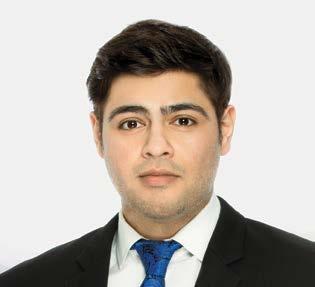
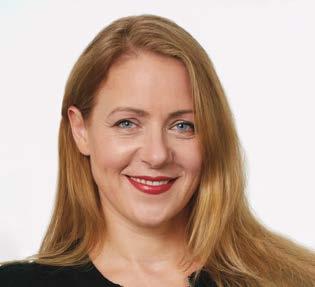
The capital requirement has now been reduced to AED15 million, which means that more companies can enter the market and crucially, successful startups with strong funding support have a real chance to apply for and obtain an SVF license.
Crypto Security
It is no secret that after Terra Luna and FTX collapsed and the sleuth of negative headlines around Web3 companies, there is nervousness around crypto. The UAE has always prioritized sensible business regulations with strong compliance measures. Any company looking to acquire an SVF license, including crypto companies, must satisfy the seven independent assessments under the SVF Regulation for: technology risk management, corporate governance and risk management, float management, payment security management, business continuity management, business conduct and customer protection, and AML/CFT control systems.
If any company wishes to operate with an SVF license, then it is purporting to enter into a serious line of business where if it defaults, it is ultimately consumers who will suffer the most. Moreover, without adequate protections and controls, SVF can become a hotbed for money laundering. Adequate control measures are intrinsic to ensure proper protection of consumers and the market.
Conclusion
The table has been set and much like the other regulators in the UAE, the CBUAE has created a solid framework to allow crypto companies to thrive while ensuring that consumers are protected. Few companies have managed to successfully complete the rigorous SVF regulatory process under the auspices of the CBUAE which has a reputation for high quality, and only allows the strongest companies to come through.
41 conomy middle east MAY 2023
Soham Panchamiya, Associate, Reed Smith
Adela Mues, Partner, Reed Smith
Seamless shaping the future of digital commerce
Global event assists businesses and institutions with their transformational journeys
The COVID-19 pandemic has significantly boosted the growth of e-commerce, resulting in a projected $5.7 trillion in sales for 2022. While convenience is a significant factor driving this success, physical events remain a crucial element in understanding the trends governing the sector, as well as connecting leaders and stakeholders towards win-win pathways for growth. Among these events, Seamless is the largest, covering the changing landscape of digital commerce.
In a recent conversation with Joseph Ridley, General Manager of Seamless Middle East, Economy Middle East delved into the vital role that big events play in promoting digital businesses’ growth.

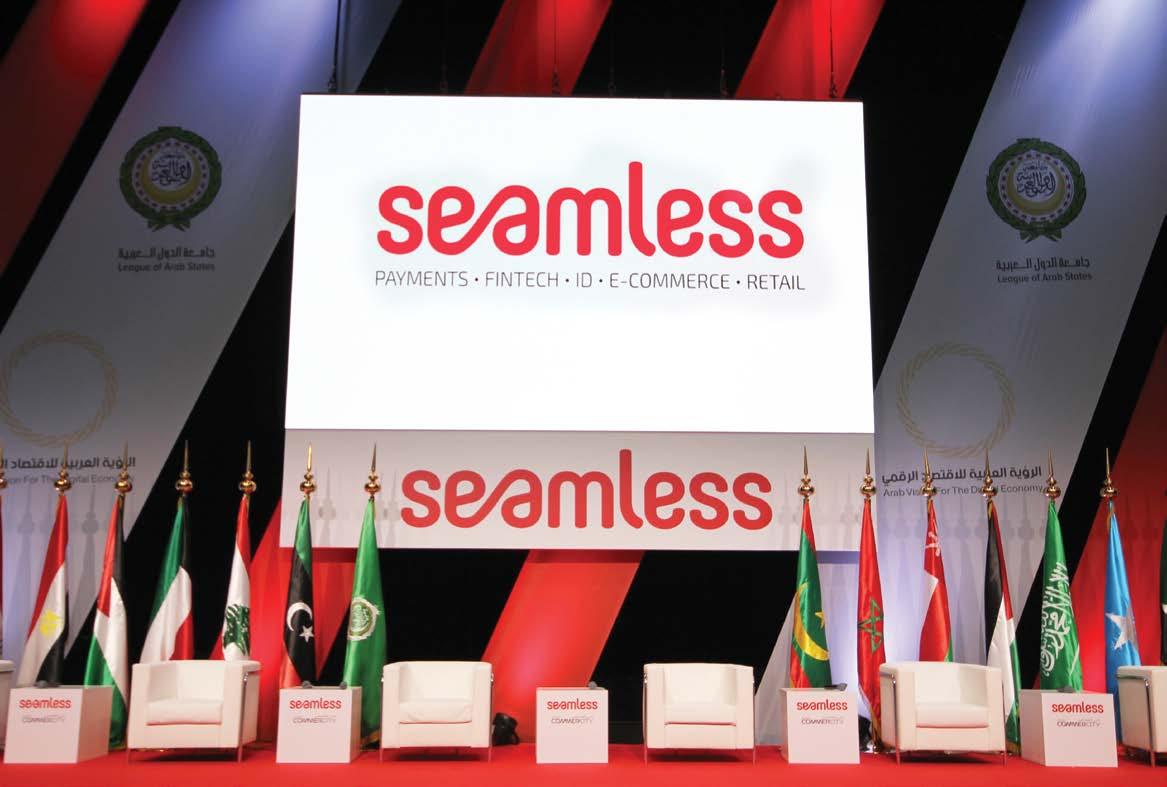 Joseph
Manager,
Joseph
Manager,
conomy middle east MAY 2023 technology & Innovation
Ridley, General
Seamless Middle East
What inspired you to start Seamless?
Ultimately the vision for Seamless has always been to create one of the largest global events that brings together banks and financial service providers, government, merchants, and retailers of all sizes, in order to help them with their digital transformation journeys and to better serve SMEs, consumers and citizens.
How has the event evolved over the years, and what changes have you seen in the digital commerce industry during this time?
Twenty-three years ago, 300 individuals came together at the Al Bustan Rotana hotel in Dubai to discuss the impact of debit and credit cards on the banking industry.
As of today, the 23rd edition of Seamless Middle East draws over 20,000 attendees from around the world, marking a significant increase from previous years. The event focuses on the payments, banking, fintech, retail and e-commerce sectors and aims to address pressing issues such as the development of cashless economies and the role of emerging financial technologies in driving financial inclusion and literacy. The audience has evolved significantly in recent years, with the emergence of new job titles and departments focused on new technologies. This is driven by traditional institutions’ desire to understand and embrace digital change and meet new customer expectations. Additionally, thousands ttof new market entrants, including fintechs and start-ups, are disrupting traditional business models.
In 2015, our global e-commerce and retail technology brands were integrated into the event, and we have consistently invested in bringing global thought leaders, practitioners, and solution providers to the region to drive e-commerce forward. The COVID-19 pandemic has accelerated the growth of e-commerce, providing a solid foundation for us to expand on as we focus on developing the home delivery, last-mile, logistics, and digital marketing profiles of the event. These areas of interest are experiencing remarkable growth rates.
What are the most significant challenges facing the digital commerce industry today?
Digitalizing and educating the 23 million SMEs and micro SMEs in the Middle East region is a monumental undertaking that requires continuous collaboration between the private and public sectors at the domestic and international levels to promote digital commerce growth.
As part of this effort, Seamless will provide businesses with the knowledge they need to measure and achieve ROI on their investments.
How will tech like Web3.0, and generative AI disrupt e-commerce?
We still have much to explore in regards to the full potential of Web 3.0 and Generative AI. The impact of these technologies on digital commerce in the Middle East is yet to be fully understood, and the challenge lies in identifying the best ways
to leverage them to create commercial opportunities.
How do you select the exhibitors and speakers for Seamless?
Our exhibitors and sponsors include the world’s foremost leaders in payments, fintech, identity, retail, e-commerce, home delivery, and digital marketing. We receive significant demand for exhibition space from top global companies seeking to establish a foothold in the Middle East or maintain their position in this highly competitive market. Similarly, our team is dedicated to researching market trends and identifying industry leaders who can help drive crucial conversations forward. We ensure that these thought leaders speak at our event to provide valuable insights and perspectives.
What role do you see Seamless playing in shaping the future of digital commerce?
Unlike other tech events, we focus on enabling digital commerce, and making Seamless the biggest meeting place for the Middle East’s digital commerce market. There is no better opportunity to discover the latest tech while networking with the leaders driving this industry forward than on our exhibition floor.
What advice do you have for entrepreneurs and businesses looking to succeed in the digital commerce industry?
Fortunately, there is an abundance of content available to assist small businesses in succeeding in the challenging Middle East market. Our Start-up Stories talks offer insights from individuals who have undergone this process, while E-Commerce University provides actionable advice and valuable lessons in educational classes. Our Launch Pad showcases the latest technology demonstrations, and the Start-up Village displays the hottest new companies in the region for you to browse.
What are your future plans for Seamless, and how do you see the event evolving in the next few years?
By 2024, we plan to double the size of our exhibition floor space to meet the high demand from both local and international exhibitors looking to expand their businesses across the region. Our aim is for Seamless Middle East to become the premier global digital commerce event connecting East and West, leveraging Dubai and the United Arab Emirates’ strategic location.
We are also pleased to announce the expansion of our newest profiles, “Seamless Home Delivery” and “Seamless Digital Marketing,” which are designed to help brands utilize new technologies to connect and engage with their customers. Globally, Seamless runs events in North Africa (Egypt), Asia (Singapore), Saudi Arabia, Africa (South Africa) and, new for 2023, Europe (Germany). We see enormous potential for growth in all of these markets, and the upcoming launch in Berlin will bring together the European payments and commerce market in October 2023.
43 conomy middle east MAY 2023
Bringing game-changing collaborative intellectual property to technology market

Injazat joins forces with Nexthink Infinity to revolutionize digital workplaces
Injazat, a homegrown G42 company, is dedicated to utilizing the power of technology to revolutionize industries and aid organizations in optimizing their processes.
Recently, the company has joined forces with Nexthink Infinity to bring about intelligent digital workplaces in the region, thereby assisting IT teams in effectively measuring and managing the digital employee experience at all times. With a goal of becoming a unicorn by 2025, Injazat has already achieved a turnover that amounts to one-third of its target in 2021.
In an exclusive interview with Ussama Dahabiyeh, CEO of Injazat, conducted by Economy Middle East, we explore the factors that will propel the company toward achieving its ambitious aspirations.
conomy middle east MAY 2023 technology & Innovation
What is the advantage of being part of G42 and what does that mean for the outlook of the AI and technology business you’re in?
Since becoming a part of the G42 family in 2020, we have experienced immense advantages. Our expansion plans around technology capabilities have been propelled, and, as a result, we have rapidly scaled up our business.
The G42 ecosystem comprises several next-generation technology companies, ranging from energy-efficient data centers to AI-powered geospatial intelligence and big data analytics. This membership brings forth numerous benefits, including access to the G42 network of companies, which facilitates innovation development by leveraging the collective intellectual property. This synergy is a gamechanger for the services we offer in the technology market.
What lies behind the success of Injazat as a digital transformation, cloud, and cybersecurity company?

At Injazat, we firmly believe that our success is the result of the exceptional talent we’ve attracted, enabling us to offer digital transformation, cloud, and cybersecurity solutions to our clients.
Our problem-solving approach involves identifying the “right” problem to tackle by utilizing next-gen technology, a selective network of partners and knowledge networks, and working closely with our clients to co-create effective solutions. This collaborative approach ensures that we deliver robust and scalable solutions for businesses in all industries.
Our commitment to sustainability, innovation, and efficiency is evident in our smart city solutions. By addressing common urban issues such as traffic congestion, air pollution, energy consumption, and public safety, we help cities and enterprises become more sustainable, resilient, and responsive to the needs of their customers and citizens.
Why is co-creation and co-ideation important for Injazat?
Our company has been able to develop some of our most innovative and impactful ventures and products through co-creation. This approach has proven to be instrumental in enabling us to innovate more rapidly, remain up-to-date with emerging technologies, and ultimately, provide superior products and solutions to our valued customers. Through ongoing innovation and collaboration, we are able to deliver technically advanced, powerful, and industryrelevant solutions that are highly adaptable to meet evolving customer needs.
Furthermore, our commitment to co-creation has allowed us to establish strong partnerships with prominent industry organizations and leaders.
What innovative areas of smart cities and digital transformation are you focused on and why?
Smart cities represent the future of urban development. With advancements in technology, we now have the ability to construct interconnected and sustainable cities and
enterprises. By 2050, over 70 percent of the global population is predicted to reside in urban areas, driven by the desire for better opportunities and lifestyles. Digitalization, if implemented effectively, can facilitate a rapid transition to a knowledge-based and data-driven economy anchored on citizen-centric, smart ecosystems.
At Injazat, we prioritize smart city initiatives with a securityfirst approach. Our efforts involve designing a framework for inter-agency collaboration processes, sharing data, utilizing AI for analytics, implementing command and control systems, and integrating advanced automation.
What are Injazat’s growth outlook and strategic areas of focus for the next five years?
In a world of constant change and digital disruption, I believe the possibilities are limitless. Our goal is to develop technically innovative teams that can thrive in the new virtual environment, with a particular emphasis on the metaverse. As 6G gains prominence in the next four to five years, mixed and extended reality will become increasingly commonplace across all industries. Furthermore, we are actively seeking opportunities to expand within the region and partnering with like-minded organizations that share our vision of empowering human achievement and progress.
45 conomy middle east MAY 2023
Ussama Dahabiyeh, CEO, Injazat
A "quantum supremacy" breakthrough could transform our world
But we have to wait a qubit longer
By Hadi Khatib
Quantum computing utilizes the principles of quantum mechanics to tackle complex problems beyond the capabilities of conventional computers. The technology’s adoption is rapidly increasing and is poised for a breakthrough. Companies are eagerly anticipating and apprehensive of its arrival. According to the International Data Corporation, the global quantum computing market is projected to grow at an annual rate of 51 percent, from $412 million in 2020 to $8.6 billion in 2027. QCaas, or Quantum Computing as a Service, allows businesses to access this technology through the cloud, and it is estimated that up to 20 percent of companies will allocate budget for it in 2023, compared to just 1 percent in 2019.
Is quantum computing a threat?
According to a Deloitte survey, approximately half of all companies consider themselves susceptible to a “harvest now, decrypt later” attack, in which presently encrypted data is kept until a future quantum computer can decode it. As a result, there is a race to implement quantum-resistant algorithms. Economy Middle East recently inquired of Greg Wetmore, vice president of Software Development at Entrust, whether quantum computing poses an existential danger to blockchain.
“The hashed data structure that provides integrity in the blockchain distributed ledger is considered safe based on the current pace of advancement in quantum computing and its algorithms,” Wetmore says.
“Experts believe that today’s hashing algorithms like SHA2 or SHA3 will be safe for many decades. This, however, does not mean that the blockchain ecosystem can ignore the quantum threat. In most blockchain systems, like Bitcoin, identities are represented by public/private key pairs. A user’s Bitcoin wallet

conomy middle east MAY 2023
technology & Innovation 46
address is a public key, while the private key is what protects the bitcoin balance and allows trade transactions. These identities must transition to quantum-safe encryption,” he adds.
According to NYUAD Affiliated Faculty and Clinical Professor of Computer Science Sana Odeh, “Cryptography as we know it, including blockchain, will be rendered obsolete by the power of quantum computing.”

“That’s why quantum computing cryptography is a huge focus for research. Quantum communication also has the potential to produce the long-term cryptographic security we need,” Sana told Economy Middle East.
For his part, Vasseh Ahmed, managing director of Enjinstarter MENA, believes there are two main schools of thought on this. “The first is that it’s a blockchain killer, either because it will break encryption algorithms or because it will become a more efficient and powerful data storage alternative. The big risk for blockchains is quantum computing’s ability to match public keys with their corresponding private keys – something that would take millennia with today’s computers, but only a few hours with quantum computers, making every blockchain wallet susceptible to theft and manipulation,” Vasseh says. “The other, more optimistic school of thought says that blockchain and quantum computing will work together to revolutionize data storage and computing processing limitations,” he adds.
Building quantum computers
Google has constructed a quantum AI campus with the goal of creating an “error-corrected quantum computer” by 2029, while IBM aims to develop a 4,000-qubit quantum computer by 2025. The Technology Innovation Institute in Abu Dhabi has started constructing the first quantum qubit in the Arab world in 2021.
What are qubits?
Quantum computing requires massive amounts of data to be regularly fed to the system in order to be practical. The core component of a quantum device is the qubit, and the main obstacle to its effectiveness is preventing contamination of quantum data. Quantum error correction (QEC) is a process that uses ML learning and AI algorithms to introduce redundancy and remove errors, effectively drowning out noise and interference in the computing environment.
A theoretical version of a qubit, called a topological qubit, aims to achieve this, but it has not yet been fully realized.
Quantum Computing applications
Intelligence agencies are using quantum computing to sift through financial records of suspected extremists, a fact unknown to many. This technology has the potential for significant applications in various fields such as science, medicine, security and finance.
Quantum computing can potentially solve several critical real-world problems, such as developing room-temperature superconductors, advancing pharmaceutical research by accurately mapping molecules, and removing carbon dioxide from the environment.
Quantum computing can replace expensive and risky trialand-error methods for drug development with effective ways of understanding drugs and their reactions in humans. Furthermore, Quantum computing can effectively combat cybersecurity threats and create encryption methods, such as quantum cryptography.
Financial simulation models used to determine the optimal investment mix based on factors such as returns and risks require significant amounts of computer resources. Quantum technology has the potential to significantly decrease
47 conomy middle east MAY 2023
calculation times and improve accuracy in these complex and data-intensive calculations.
Meanwhile, improved data analysis and robust modeling can empower industries to enhance their supply chain management, as well as streamline air, marine, and ground traffic control.
In addition, a quantum computer could enhance weather system modeling by swiftly and accurately mapping changes in weather patterns, thereby strengthening efforts against climate change.
How far are we from having the technology on a commercial level?
According to Wetmore, quantum computers do exist today, but are still in a nascent phase. “Quantum computers today are very expensive to build and run and are not yet powerful enough to be considered commercially usable. We are seeing massive investment in quantum computing from both governments and private industry. Investing in foundation initiatives like Zero Trust, transitioning to quantum-safe encryption to protect networks, identities, and data, has become an imperative for organizations.”
Sana says commercial applications are already taking place. “Big technology companies already have quantum computers. IBM was one of the early pioneers, and is now licensing its technology to businesses,” she adds.
“AstraZeneca has a quantum computing team in the hope that future vaccines will take one week to develop rather than a year. Amazon launched the AWS Center for Quantum Networking, along with Amazon Braket, a quantum computing service for research and software development, which allows developers access to quantum computers from the likes of IonQ, Oxford Quantum Circuits, Xanadu, Rigetti and D-Wave. These developments have not yet translated to the mainstream as it is still very expensive, and the hardware needs further development to make it less error prone,” Sana says
Quantum computing versus Web3.0, Metaverse and GenAI
Wetmore says Quantum computers will operate in tandem with existing and emerging technologies, using elements such as large data sets to be efficiently handled by Quantum computers, and potentially promoting faster training and generation of new content in AI applications.
Sana says companies in the U.S., such as Google, and researchers in China, have already claimed to have reached “Quantum supremacy” by solving, within seconds, mathematical problems that would take classical supercomputers billions of years.
“The power of Quantum computing

is highly important for the advancement of AI, machine learning, cryptography, renewable energy, sustainable cities, healthcare, secure banking, Web 3.0 applications, and an immersive experience in the metaverse. Just as the Internet and the Web revolutionized our lives in the 20th century, quantum computing will do the same in this century,” she adds.
“That’s why NYU Abu Dhabi founded the NYUAD International Hackathon for Social Good 11 years ago to help turn theory into application. This year’s April 27-30 hackathon focuses on the use of quantum computing to build solutions to problems related to the UN Sustainable Development Goals. Climate change and the need to create a more sustainable future is the biggest challenge of our time, and there is a lot of funding available to companies and organizations that can develop solutions. In light of the UAE’s Year of Sustainability and our participation in the Universities Climate Network, we hope that the students from around the world involved in this year’s event will develop ideas that can change our world for the better,” Sana says.
Vasseh believes that Quantum computing can accelerate the development of blockchain technology, and advance the potential of Web3, by creating a cutting-edge data storage and value transfer infrastructure that can be implemented across a diverse range of industries.
“Also, Generative AI, such as large language models, is already expensive due to resource-intensive computing requirements. As these models become more complex, current technology will no longer be able to keep up. Quantum computing is seen as a solution to this issue because it can exponentially increase computational power and reduce emissions. It could mean things like safer autonomous cars and near-perfect simultaneous translation,” Vasseh says.
“The metaverse suffers from the same resource constraints as Generative AI. The potential is plainly evident, but today’s technology will only take the user experience so far. Quantum computing can create much richer, photorealistic worlds that can unlock the power of the Metaverse. Consider activities such as education. A hyper-realistic classroom experience would dramatically improve virtual learning.”
48 conomy middle east MAY 2023 technology & Innovation
SVB collapse presents concerns, challenges for Mideast businesses

Banks must maintain proactive communication with depositors to prevent panic
Causes behind the collapse of SVB and other U.S. banks
The collapse of three U.S. banks, including SVB, sparked fears of contagion. These concerns were compounded by the subsequent rescue of Credit Suisse in Europe, despite Switzerland’s Parliament rejecting the government’s proposed $120.82 billion aid for Credit Suisse’s merger with UBS. Seeking regulatory insights, Economy Middle East reached out to BSA, a leading law firm headquartered in Dubai. Partner Michael Kortbawi and associate Maroun Abou Harb provided the following responses.
The collapse of SVB and other U.S. banks can be attributed to a range of regulatory failures and weaknesses. One key factor was the inadequate supervision and oversight of lending practices and risk management strategies by regulatory bodies, including the Federal Reserve, Office of the Comptroller of the Currency, and Federal Deposit Insurance Corporation. Specifically, these regulatory bodies failed to identify and address risky lending practices, such as excessive lending to the technology industry and overly aggressive lending, which contributed to the collapse of banks like SVB. Moreover, the lack of effective measures to control systemic risks and prevent contagion between financial institutions worsened the impact of bank failures and caused wider economic instability.
conomy middle east MAY 2023
Legal Review
In addition, some experts argue that the regulatory framework itself had deficiencies, including overly complex, fragmented, and reactive regulations that allowed banks to exploit loopholes and engage in risky behavior that ultimately led to their collapse. Following the 2008 financial crisis, regulatory reforms were introduced to strengthen the oversight and resilience of the U.S. banking system, such as the Dodd-Frank Wall Street Reform and Consumer Protection Act. However, the effectiveness of these reforms remains a subject of debate, with some experts calling for further regulatory action to prevent future bank collapses.
The impact of the collapse on businesses and financial institutions in the Middle East
The collapse of Silicon Valley Bank has created uncertainty and concern for businesses and financial institutions in the Middle East, particularly for startups and other companies that relied on SVB for funding. This challenging environment has made it difficult for these businesses to secure alternative sources of funding and support, impeding their growth and expansion plans.

The repercussions of the SVB collapse could also extend to the wider startup ecosystem in the Middle East, potentially shaking investor confidence and hindering future investment, which may slow down growth and innovation and impede new startups from entering the market. Despite these challenges, venture capital firms remain crucial in funding early-stage startups, and many will continue to do so despite the SVB collapse. However, it may take time for the startup ecosystem to recover, but the resilience and determination of the community should not be underestimated.
Regarding high interest rates and their effect on bond yields, it should be noted that when interest rates increase, new bonds with higher yields become available, which can make existing bonds with lower yields less attractive to investors. This can lead to a decrease in demand for existing bonds, causing their prices to fall and their yields to rise, which could negatively impact bond yields.
When an investor purchases a bond, they are essentially lending money to the bond issuer, which can be a corporation or a government entity, for a fixed duration. In exchange, the investor receives periodic interest payments (known as “coupon payments”) and their principal investment back upon the bond’s maturity. A bond’s yield is the total return an investor can expect, considering its price and coupon payments.
The relationship between interest rates and bond yields is inverse; that is, when interest rates increase, bond yields decrease, and vice versa. This occurs because new bonds issued when interest rates are higher usually offer higher yields, which makes existing bonds less appealing. Conversely, when interest rates decrease, newly issued bonds have lower yields, causing existing bonds to become more attractive.
To illustrate, let’s say an investor purchases a $1,000 bond with a 5 percent coupon rate and a maturity of 10 years.
The yield on this bond is 5 percent since the investor receives $50 in annual coupon payments, which is 5 percent of the bond’s $1,000 face value. If interest rates increase, new bonds with a 7 percent coupon rate may be issued, making the existing 5 percent bond less appealing to investors, causing its price to fall. As the price falls, the bond’s yield increases, making it more attractive to investors until it’s on par with the new 7 percent bonds.
Contingency measures for banks to avoid exposure to excessive withdrawals
Banks worldwide have contingency plans to manage liquidity risk and prevent potential depositor panic. These plans may include maintaining appropriate levels of liquid assets, establishing credit lines with other banks or central banks, and implementing communication strategies to reassure depositors during times of uncertainty. However, the possibility of depositor panic is not limited to any specific region or country, including the UAE, Saudi Arabia, or the broader Middle East region. Any bank could face a run on deposits if depositors become concerned about the bank’s financial stability, which could be triggered by factors such as an economic crisis, sudden economic changes, or rumors of insolvency.
To prevent depositor panic and minimize its effects, banks must maintain transparent and proactive communication with their clients, keep adequate levels of capital and liquidity, and implement risk management strategies that address potential liquidity shocks. Regulators also have a critical role in ensuring that banks have suitable contingency plans in place and comply with regulatory requirements.
In today’s digital era, mobile banking has become increasingly popular and can contribute to any bank’s collapse if customers start withdrawing their deposits in large numbers. Mobile banking allows customers to transfer money between banks without restrictions, leading to a chain reaction that could result in a bank’s insolvency. To mitigate this risk, banks must maintain sufficient levels of capital and liquidity and implement effective risk management practices.
50 conomy middle east MAY 2023 Legal Review
Legal recourse for GCC business owners in case of bank failures

Business owners in the GCC may have legal options to recover losses in the event of a bank failure caused by fear contagion. One option is to file a claim with the Deposit Protection Scheme, a regulatory framework that provides compensation to eligible depositors up to a certain limit, varying depending on the regulations of each GCC country. However, businesses with deposits exceeding the limit may not be fully compensated. Alternatively, legal action can be pursued against the bank or its directors and officers for any negligence or wrongdoing. A lawyer can assist in exploring legal options and feasibility. It is worth noting that legal recourse may vary based on the circumstances of the bank’s failure and the laws of each GCC country.
However, in the case of SVB’s collapse and its effects in the Middle East, it is unlikely that Middle Eastern startups would have grounds to sue SVB, as they typically do not have a direct relationship with the bank. SVB primarily acts as a financial intermediary between VC firms and their portfolio companies, and therefore startups are not considered depositors and would not have legal recourse against the bank.
Regulatory measures needed by governments and central banks in the region
In the wake of recent events, governments and central banks in the region are implementing regulatory measures to bolster the resilience of the financial system and mitigate the likelihood of similar occurrences. This involves the implementation of new regulations and policies designed to improve the stability, transparency, and accountability of financial institutions.
For example, the Central Bank in the UAE has introduced various regulatory initiatives in recent years to enhance the banking sector’s resilience. These include the adoption of the Basel III regulatory framework, which reinforces banks’ capital and liquidity requirements, and the establishment of a resolution framework that facilitates the orderly resolution of banks in the event of their insolvency.
The Basel III regulatory framework is a set of international banking regulations formulated by the Basel Committee
on Banking Supervision as a response to the 2008 financial crisis. Its objective is to fortify the resilience of banks and the stability of the financial system by enhancing risk management, increasing the quality and quantity of capital held by banks, and improving banks’ liquidity.
Basel III has implemented stricter capital requirements for banks, including a higher minimum capital requirement for systemically important banks and a new capital conservation buffer. The quality of capital requirements has also been revised, placing greater emphasis on Tier 1 capital, which consists of equity and retained earnings.
Moreover, Basel III has introduced a new liquidity coverage ratio, which mandates banks to hold sufficient high-quality liquid assets to cover their expected cash outflows over a 30-day period of stress. This measure is aimed at ensuring banks have sufficient liquidity to meet their obligations during financial turmoil.
Similarly, the Saudi Arabian Monetary Authority has taken several measures to bolster the financial system’s resilience, including enhancing supervisory frameworks and regulatory requirements, as well as implementing a deposit insurance scheme to safeguard depositors in the event of bank failure. The Saudi Arabian Monetary Authority is the central bank of Saudi Arabia and holds several responsibilities, including implementing monetary policy, regulating the financial sector, and maintaining the stability of the national currency, the Saudi riyal. SAMA oversees and regulates the banking and insurance sectors, manages foreign exchange reserves, and promotes financial inclusion and infrastructure development.
As a regulator, SAMA enforces regulatory standards, such as capital and liquidity requirements, corporate governance standards, and anti-money laundering and counterterrorist financing regulations, for banks and other financial institutions operating in Saudi Arabia. It also supervises the implementation of payment and settlement systems in the country and has established a deposit insurance scheme to safeguard depositors in case of bank failure, ensuring a safety net for consumers and businesses.
Governments and central banks in the region are proactively strengthening the regulatory framework to ensure the stability of the financial system. However, regulators need to remain vigilant and adapt their frameworks to address emerging risks and maintain financial stability as financial systems and market conditions continue to evolve.
51 conomy middle east MAY 2023
Luxury meets nature in the heart of Meydan, Dubai
Keturah Reserve offers transformational living through the design of space
Located in District 7 of Mohammed Bin Rashid City, Dubai, Keturah Reserve is an impressive residential development designed to create transformational living spaces. With a focus on Bio Living, a first-ofits-kind concept in the Middle East, this innovative project offers a luxurious lifestyle deeply connected to nature.
Set in the heart of Meydan, Keturah Reserve offers a secluded and private living experience surrounded by lush greenery, providing residents with an immersive connection to nature. The project boasts convenient and direct access to Downtown Dubai, with four exits onto the city’s main thoroughfares, including Al Ain Dubai Highway, Al Khail Highway, Al Meydan Road, and Sheikh Zayed Road. It is the only residential development in Dubai with such direct access.
Crafted from raw materials and colors that blend subtly with the surrounding desert landscape, the AED 3 billion ($817 million) project is expected to be completed by Q2 2025. Its unique architecture and interiors make it visually stunning and a standout development in the area.

The name Keturah, derived from an Arabic word, refers to the fragrance traditionally scattered throughout a home to welcome guests. Like the word “couture,” Keturah signifies bespoke and luxurious experiences, making it an ideal name for this exceptional residential project.
Keturah Reserve offers a range of properties, including 93 townhouses, 90 villas, 540 units in six apartment block buildings, and eight penthouse apartments, providing residents with a variety of luxurious living options to choose from.
conomy middle east MAY 2023
Real Estate
The first new luxury bio-living residential development in the Middle East

Raw, silent, elevating and empowering, the concept of New Luxury is characterized by its subtle and powerful impact on emotional well-being, achieved through the thoughtful design of living spaces, both indoor and outdoor. Bio Living, which is based on the principles of Biophilic Design, seeks to integrate nature into the built environment to enhance the physical, mental, and emotional health of those who inhabit it. At Keturah Reserve, Bio Living is integrated into the architecture, interior design, and surrounding landscape, creating a harmonious balance between human living and the natural environment.
Keturah Reserve SuperHomes, designed from the inside out
Keturah Reserve SuperHomes are meticulously designed using the Golden Mean principle of proportion and ratio to create a harmonious living space from the inside out. Travertine, wood, and bronze materials are used to seamlessly link the interiors with the exteriors. The color scheme of bleached bone, champagne, and bronze complements the natural landscape, which is visible from every angle of the home. Olive trees, palm trees, green walls, balcony planters, and rooftop gardens provide a lush and vibrant atmosphere.
These homes have double interior space volumes, which promote the flow and circulation of naturally cooled air, eliminating the need for hallways or corridors. The furniture and fixtures are custom designed for each space, prioritizing the residents’ physical and mental well-being.
The homes are strategically angled to capture and optimize natural daylight while minimizing heat and glare. The architectural lighting enhances the body’s circadian system, improving mood, comfort, and alertness, and creating a healing environment in the home.
In addition to providing luxurious living space, Keturah Reserve SuperHomes are committed to Bio Living, which values and respects all forms of life, including flora, fauna, and humans.

The Park
At the heart of Keturah Reserve lies The Park, a hub for socializing and recharging, available 24/7. The Park is adorned with globally-sourced olive trees that provide ample shade, creating a welcoming atmosphere for pedestrians of all ages. It boasts Japanese foot massage mats, open-air meditation spaces, and exercise zones, all designed to promote wellness and relaxation.
Amenities
Keturah Reserve fosters a thriving and harmonious community by providing access to various communal spaces such as The Park, an outdoor pool, women’s and men’s gyms, and spas, all easily reachable on foot through cool, tree-shaded pathways. The community offers a range of activities such as the Pilates Studio, WaterBike pool, Silk Rope classes, rooftop meditation and yoga space, all designed to enhance and strengthen the body’s core from the inside out.
53 conomy middle east MAY 2023
The Kids’ Zone
The Kids’ Zone at Keturah Reserve is designed to provide mindful and educational play activities suitable for all age groups, ranging from babies to teens. The zone offers an array of amenities, including a creche, educational daycare center, Montessori classes, Music and Dance Academy, outdoor splash pool and play areas, kids’ spa, Bio Living Farm, indoor gym, and activity center, all aimed at nurturing the physical and mental well-being of children.
Founder and CEO Talal Moafaq AlGaddah
Talal Moafaq AlGaddah, the 38-year-old founder and CEO of the luxury real estate and hospitality brand, Keturah, is excited to launch his first standalone luxury well-being real estate project, which is scheduled for completion in Q2, 2025. AlGaddah believes that New Luxury is all about creating an exceptional experience. “I want to give people a space to connect with their families, with themselves and all aspects of their lives. I want to create something with an authentic value that will endure for generations. We are building a brand that people can trust and buy into without thinking. Our vision is for Keturah Reserve residents to be the happiest, most fulfilled people in Dubai,” he says.

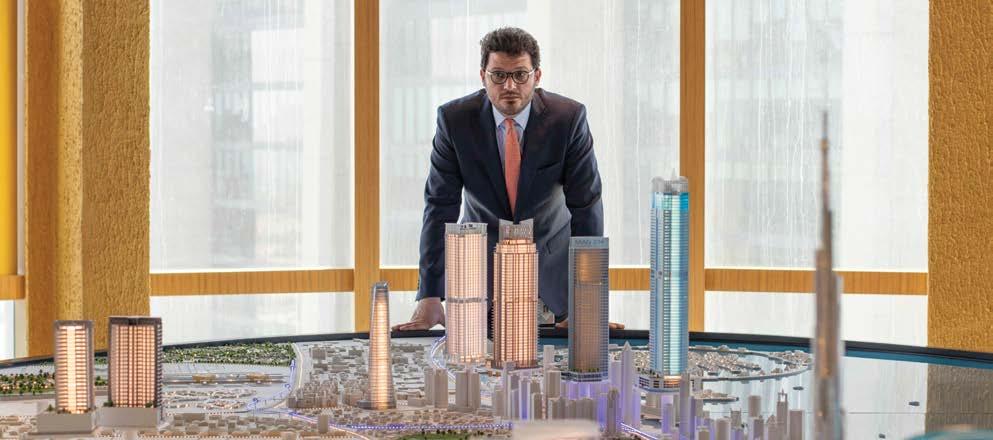
The family
Talal Moafaq AlGaddah said: “Too often, so-called family developments focus exclusively on children, whereas Keturah Reserve allows each family member of any generation to find their own space, with excellent services tailored to their individual needs.”
According to AlGaddah, Keturah Reserve stands apart from other family developments. “While many developments in Dubai include amenities such as a gym, a library, or pool, residents there often choose to go elsewhere, perhaps for lack of attention to the finer details. When it comes to services and amenities, we offer our residents no other than the absolute best of the best.”
AlGaddah wants residents to feel like they belong to the community, and vice versa. “We’re offering people space, space of mind, and space to relax in a development built with care, attention to detail and a commitment to quality.” His dream, he says, is for the Keturah Reserve residents to long to come back home as soon as they leave, and believes that nothing is more important than the smile on the face of a happy client.
54 conomy middle east MAY 2023
Real Estate
Talal Moafaq Al Gaddah, Founder and CEO, Keturah

.يبد بلق يف ةيهافرلا ناونع Burj Daman, Al Mustaqbal St, DIFC, Dubai, UAE | +971 (0)4 515 9999 | reservations.difc@waldorfastoria.com | www.waldorfastoria.com/DIFC
Thakher Makkah: Developing Holy Makkah's newest urban landscape Project answers prayers for
modern, connected and sustainable living
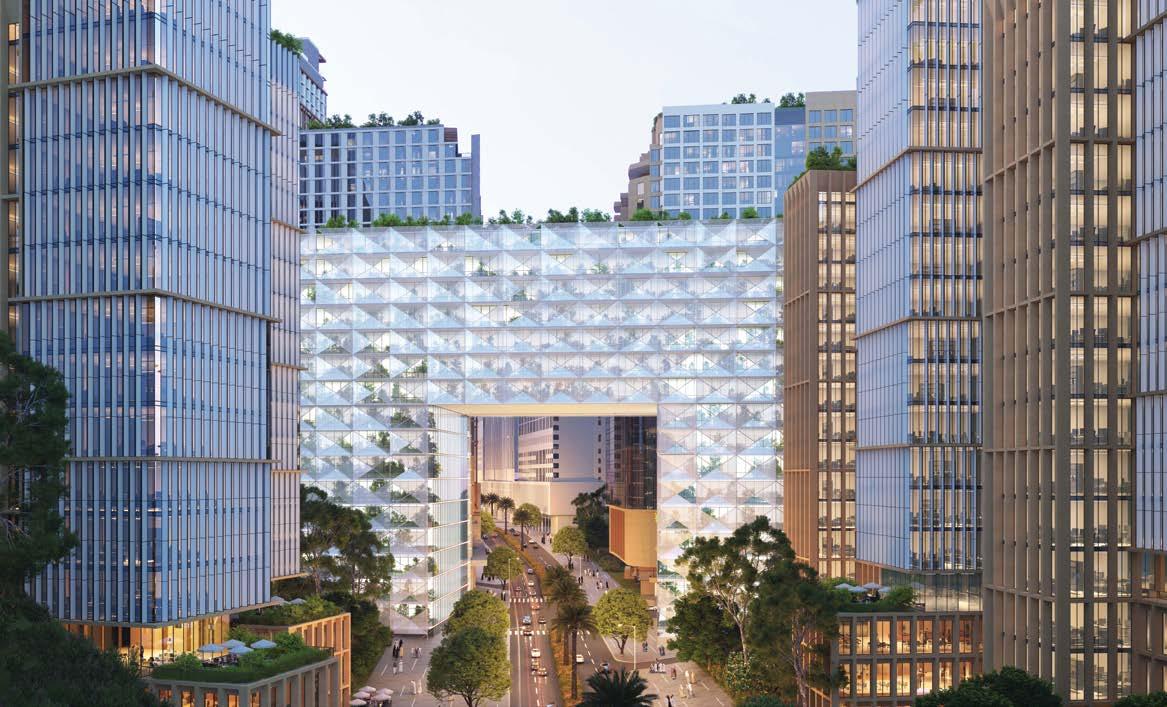
Thakher Makkah, developed by Thakher Development Company, is a prominent real estate development company with a focus on the residential, commercial, and hospitality sectors in the holy city of Makkah. This project is one of the largest and most significant in Saudi Arabia, with the aim of transforming the real estate development landscape in Makkah by promoting sustainable development and establishing itself as a preferred destination for visitors.
Valued at 26 billion Saudi riyals, the Thakher Makkah project is expected to create 15,000 direct and 18,000 indirect job opportunities. This critical project aligns with Saudi Vision 2030, which aims to diversify the economy and promote sustainable development. To shed more light on this project and its importance, Economy Middle East conducted an interview with Eng. Abdulaziz bin Saleh Al-Aboudi, the CEO of Thakher Development Company.
How will the no-limit on Hajj and Umrah pilgrims impact real estate and tourism projects in the holy city of Makkah?
The hospitality and real estate sectors in the Holy City of Makkah are expected to experience significant growth. It is important to prioritize sustainable development in these markets by consistently creating projects that align with the needs and goals of visitors and investors alike. Thakher Makkah serves as a prime example of such a project, providing convenient access to the Holy Mosque (Haram).
How does Thakher Makkah’s real estate vision align with Saudi Vision 2030?
The Thakher project boasts an extensive range of hospitality options, including hotels, residential properties, and commercial spaces, all conveniently situated within a modern urban plan that prioritizes high living standards. Once all phases of development are complete, this impressive project is expected to welcome over 1.6 million visitors and pilgrims, contributing to the fulfillment of Saudi Vision 2030’s goal of hosting 30 million Umrah performers and 6 million pilgrims by 2030.
conomy middle east MAY 2023
Real Estate
To achieve this objective, it is crucial to enhance the services provided to pilgrims and Umrah performers, and the Thakher project is ideally suited to meet these needs with its contemporary and remarkable development features, which cater to the expectations of both visitors and investors.
How does developing residential, commercial and hospitality properties in the holy city of Makkah differ as a location from other Saudi cities?
Thakher Makkah is an ideal accommodation option for pilgrims who want to be just steps away from the Holy Mosque. With an approximate distance of 1 km from the Holy Masjid (Haram), this strategically located complex offers exceptional opportunities for visitors and investors alike. As one of the largest real estate projects in the Kingdom of Saudi Arabia, Thakher Makkah spans over an area of 320,000 sqm and boasts a variety of facilities, making it one of the most comprehensive real estate projects in Makkah. But the benefits don’t stop there. In addition to being close to the Holy Masjid (Haram), Thakher Makkah is also located just a few kilometers away from the holy sites of Mina, Muzdalifah, and Arafat. Its strategic location and accessibility to major highways make it easy for investors and visitors, including pilgrims, Umrah performers, and general visitors to Makkah, to reach the Holy Masjid (Haram) within just one hour from King Abdulaziz International Airport in Jeddah.
This feature is of great importance as it provides unique investment opportunities and the best living experiences for both visitors and residents.
Please quantify the project in terms of investments, manpower, construction milestones, types and size of infrastructure development, sustainable aspects, amenities and others.
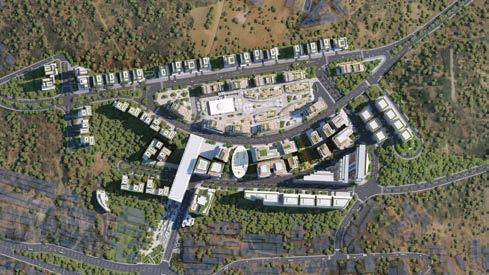
Thakher Makkah boasts a comprehensive infrastructure, including well-designed road networks, sidewalks, and beautifully landscaped areas. In addition to these features, visitors can enjoy a variety of shopping areas, restaurants, and cafes. A shopping center with 124 stores, both local and international, caters to every taste, with entertainment centers for children and a variety of cafes and restaurants. The project offers 10,000 parking spaces and a mosque with a capacity for 5,000 worshippers. Upon completion, the project will offer over 100 plots of land for various purposes, including hotels, residential, commercial, and servicerelated areas. Apartments for hotels and residences will be available in different categories and also available for freehold ownership.
Thakher Makkah is home to several international hotels, such as Radisson, Park Inn by Radisson, and Novotel, which boasts the largest number of rooms worldwide. The project will not only enhance the hospitality industry in Makkah but also create jobs for its residents by generating 15,000 direct and 18,000 indirect employment opportunities. The project’s total value exceeds 26 billion Saudi riyals.
What is Thakher Makkah’s pipeline of future projects, and does it have interest outside of Saudi Arabia?
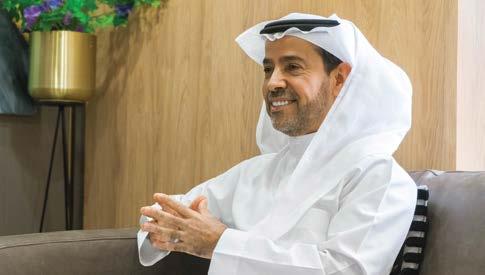
Our main objective presently is to complete the second phase of the project by 2024. Our success as a business will be evaluated based on our ability to deliver the project on time while providing exceptional high-quality services and opportunities to both investors and visitors.
Additionally, Thakher Makkah’s long-standing tradition of expertise and professionalism positions us to lead and oversee the development of the Al Kidawh project as the master developer.
What technologies are you incorporating into your construction projects that make it more cost effective for you as a developer and more efficient or smarter for the end user?
At Thakher Makkah, it is of utmost importance to us to implement environmentally friendly standards in our projects. For instance, we recycle rocks that are blasted during road construction within our project, and we strictly adhere to energy-saving standards that regulate wastage. Furthermore, the incorporation of modern construction technology reduces the cost of building units locally, making it a more efficient and effective alternative to offset high construction costs. Ultimately, this approach enables us to offer reasonable prices, shorten construction time, and create job opportunities for younger generations.
57 conomy middle east MAY 2023
Eng. Abdulaziz bin Saleh Al-Aboudi, CEO, Thakher Development Company
Seychelles: Pristine destination tailored for the GCC traveler A blue economy preserves environment, identity and culture
By Ahmed Fathallah
The Seychelles tourism sector has proven to be a significant contributor to the country’s economy, generating millions of dollars in revenue and providing employment opportunities for its citizens. Despite the challenges posed by the COVID-19 pandemic, Seychelles’ recovery has been robust, with a high influx of visitors in 2022.
In 2021, the tourism sector in Seychelles made a significant contribution of SCR594 million ($46 million) to the country’s economy and provided employment to just over 21 percent of the population. These figures demonstrate the pivotal role played by tourism in shaping the country’s trade in services.
Despite the COVID-19 pandemic causing significant disruptions in the tourism industry, Seychelles has made a strong economic recovery, welcoming 296,422 visitors from January to November 20, 2022. This has resulted in estimated earnings of $823 million as of October 2022. Seychelles’ tourism sector seems to be flourishing, thanks to its offering of tropical islands, pristine beaches, and warm turquoise lagoons, making it an irresistible
luxury destination. Additionally, Seychelles boasts over 40 percent of its territory classified as a UNESCO World Heritage Site, preserving the islands’ divine image for many years to come.
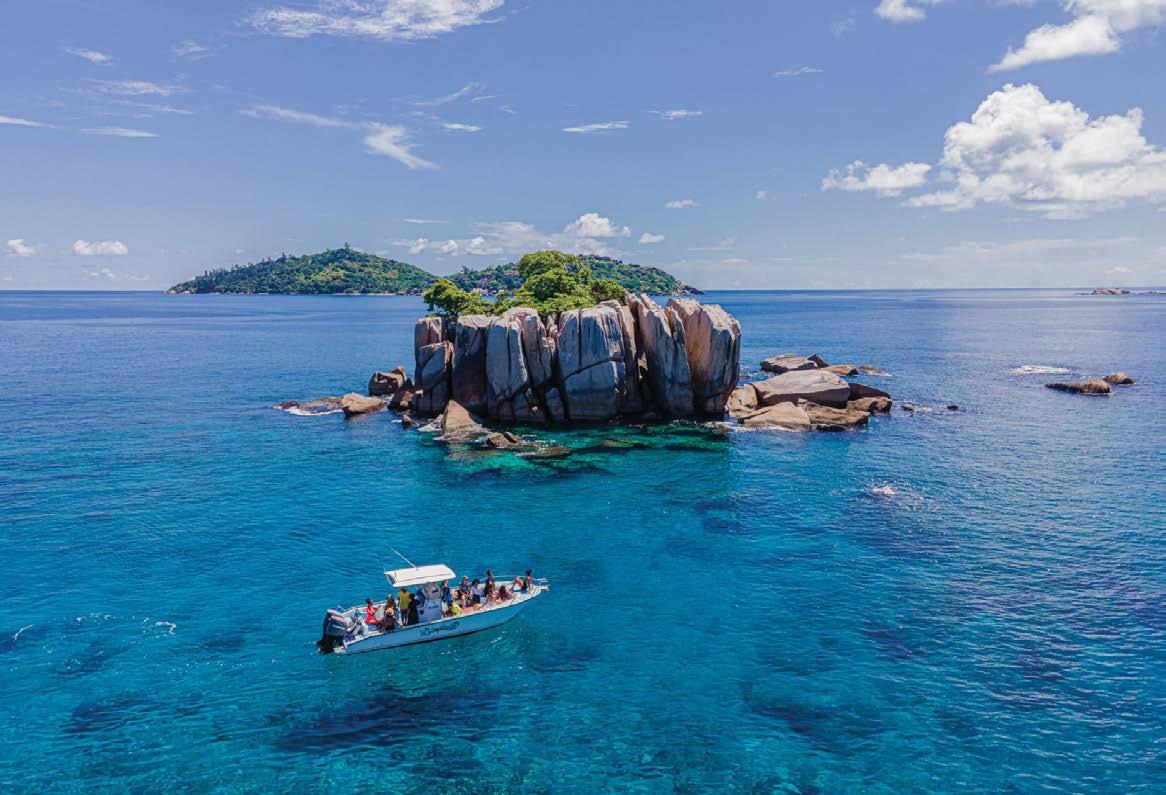
When you visit Seychelles for the first time, you’ll be pleasantly surprised to discover that there is little urbanization, no main thoroughfares, and no traffic congestion to slow down your travel within the island nation. Seychelles is a luxury paradise that borders on perfection, promising treasured holidays in uncrowded settings with low tourist volumes. The country remains committed to keeping mass tourism at bay, preserving the beauty and tranquility of this breathtaking destination. This highlights Seychelles’ strong appeal in the tourism market, particularly for Arab travelers.
The Gulf Cooperation Council countries are significant contributors to Seychelles’ tourism industry, with over 37,000 visitors from these nations traveling to the Indian Ocean archipelago in 2017. The UAE, a global financial market player and a hub for investment, is currently
conomy middle east MAY 2023
LIFESTYLE
Seychelles’ 4th leading market in terms of visitor arrivals. With several daily flights connecting Seychelles to the UAE, from Abu Dhabi and Dubai, the country has become increasingly accessible to visitors seeking not only its stunning beaches and idyllic resorts but also a safe, attractive and dynamic destination.
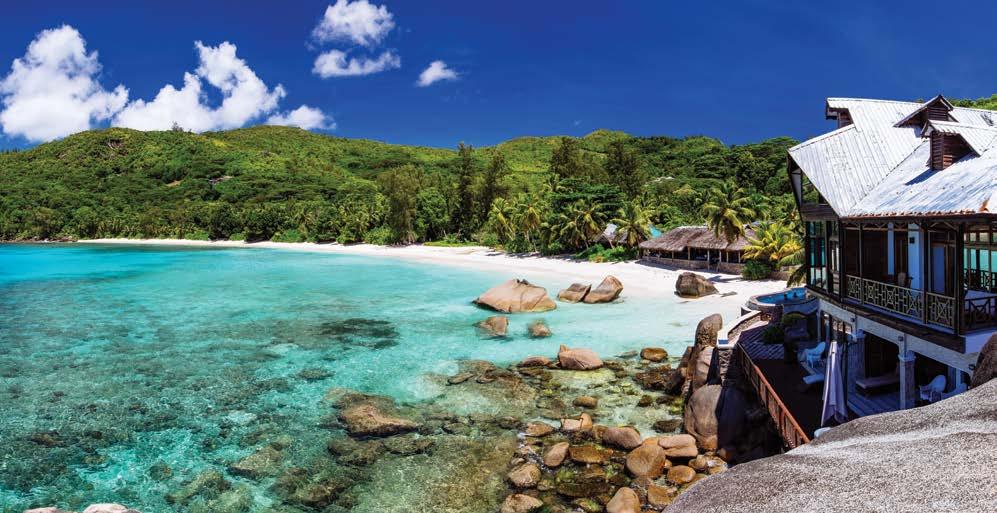
During the pandemic, GCC countries showed increased interest in Seychelles as a holiday destination, ranking among the top arrival markets. They recognize the potential of the Seychelles and its ability to offer a memorable experience despite the challenges posed by the pandemic.
Seychelles has seen a surge in visitors from Saudi Arabia and Kuwait in recent times, thanks to the island nation’s promotional activities aimed at positioning itself as an ideal holiday destination for those seeking privacy and complete relaxation.
Seychelles has further established itself as a top wedding destination for the Gulf market, particularly after representatives from the region attended the 11th Exotic Wedding Planning Conference in Ras Al Khaimah last March. Moreover, with its visa-free policy and the introduction of new hospitality options, Seychelles is increasingly attracting more travelers from the GCC region.
What sets Seychelles apart from other coastal destinations is that it’s not merely another island but a whole other world. Despite facing ongoing challenges as a small island nation, Seychelles is proactive in prioritizing sustainability in its long-term plans. The destination remains committed to environmental sustainability and resilience through the joint efforts of local officials and partners.
Additionally, Seychelles is developing a blue economy that allows for sustainable use of ocean resources to promote economic growth, improve livelihoods and create jobs while preserving the health of the ocean ecosystem. This approach leverages innovative knowledge-led approaches to realize the nation’s development potential while being mindful of the need to conserve the integrity of Seychelles’ marine environment and heritage for present and future generations. – Ahmed
Fathallah is Regional Director for Tourism Seychelles Middle East
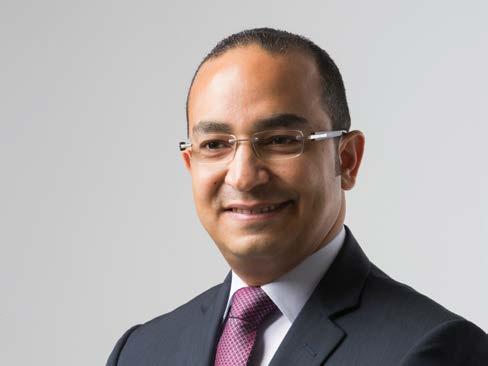
59 conomy middle east MAY 2023
Ahmed Fathallah, Regional Director for Tourism, Seychelles Middle East
Mandarin Oriental brings Eastern hospitality to Abu Dhabi's most iconic property
By Alp Sarper
The UAE is renowned for its swanky and elegant flagship hotels, but amid the plethora of luxury properties that grace its hospitality scene, only a handful truly stand out. Among these exceptional hotels is the magnificent Emirates Palace, located along the Abu Dhabi coastline.
Recently, this iconic property underwent a rebranding to become the Emirates Palace Mandarin Oriental, Abu Dhabi, thereby joining the prestigious portfolio of the Mandarin Oriental Hotel Group. With 36 hotels and nine residences in 24 countries worldwide, the group is renowned for owning and operating some of the world’s most opulent properties.
According to the executives at Mandarin Oriental, this new partnership with Emirates Palace will only serve to augment the hotel’s already noteworthy reputation, by seamlessly combining the best of Arabian hospitality with the exquisite eastern touch that the Mandarin Oriental is renowned for.

LIFESTYLE
What’s New
All of the resort’s 390 rooms and suites, ranging from Deluxe Rooms to the most extravagant Palace Suites, have been completely renovated and upgraded to showcase the classic Mandarin Oriental style fused with touches of the Arabian Peninsula. Each room or suite boasts a stunning view and is accompanied by 24-hour butler service. In keeping with current trends, The Emirates Palace has taken on an admirable initiative, introducing the region’s first-ever vegan rooms, complete with eco-friendly design, sustainable bedding, plant-based in-room dining options, and cruelty-free bath amenities.
For guests staying in the hotel’s new club and signature suites, The EP Club provides priority access to the resort’s facilities, as well as exclusive access to separate and private areas reserved for members and suite guests.
Dining
The Emirates Palace boasts a wealth of fine and casual dining options, each offering a unique atmosphere and perfectly crafted dishes. The resort has partnered with world-renowned chefs and brands, such as Talea by the acclaimed chef Antonio Guida. This Italian restaurant, awarded with one Michelin-star, offers an array of firm favorites and authentic dishes from the northern region of Italy, all based on the concept of ‘Cucina di Famiglia’.
For those craving Asian cuisine, the award-winning Hakassan serves up some of the finest dishes in town, while Martabaan by Hemant Oberoi offers an Indian fine dining experience presented in all the glamour of this rich cuisine. Vendôme, open all day, offers one of the most impressive breakfast spreads known to man. Meanwhile, BBQ Al Qasr is the go-to al fresco meatery, and The Lebanese Terrace showcases great Levantine dishes for those seeking something a little closer to home. In addition, the resort features a range of less formal poolside restaurants, cafes, and the ever-popular Le Cafe by the fountain.
The Spa
No matter if it’s a quick staycation or an extended vacation, a luxury property must have an impressive spa. Fortunately, at the Mandarin Oriental in Abu Dhabi, guests need look no further than The Hideaway Spa - a lavish 1,500-sqm oasis. The spa exudes true palatial opulence and provides service fit for royalty. The Hideaway offers the perfect combination of purity and lightness, akin to an island escape, with its white-washed interiors and oceanic sounds. The spa suites have been thoughtfully designed with couples in mind, and the skincare products have been carefully curated, ensuring that rejuvenation of the body, mind, and
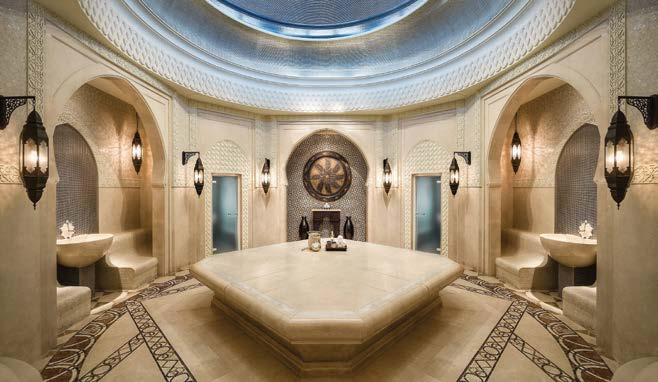
soul takes place with every visit.
The Facilities
Situated in one of the most prestigious areas of the Abu Dhabi corniche and just a stone’s throw away from the Rulers Court, Emirates Palace Mandarin Oriental sits on 100 hectares of lush gardens and lawns and boasts a private cove with pristine sandy beaches. Guests can indulge in the impeccable Mandarin Oriental service along the 1.3km shoreline, and those who desire more privacy can reserve elegantly appointed beach cabanas complete with personal butler service, cold beverages, and a tantalizing beach menu. The hotel boasts two resort-style pools, one of which is exclusively for adults, providing essential quiet time, while the other features a lazy river and aqua park. At the edge of the resort lies the water sports club, offering an array of activities from kayaking to jet skiing and highly recommended speed boat tours, which take guests to nearby islands reminiscent of an ocean paradise.

61 conomy middle east MAY 2023
Michelin's Triple Revolution: Human, technological, and environmental CEO touts mutually beneficial collaboration with competitors
By Alp Sarper
In 2022, the global tire market size reached 2,321.3 million units, with numerous brands from around the world. While some brands are more recognizable than others, Michelin, the 134-year-old French company, continues to lead the industry as the global leader, thanks to technological advancements such as automation, effective use of data, AI, and employee engagement schemes. Michelin’s tire business operates across 67 production facilities that manufactured around 200 million tires in 2022. At the group level, Michelin has a presence in 175 countries and employs 132,000 individuals.


Michelin places sustainability at the core of its operations and continues to emphasize its environmental commitment. It has set an ambitious target of achieving 100% sustainable materials in its tires by 2050. In addition to tire production, the company offers its clients digital services, maps, hightech materials, 3D printing, and the renowned culinary Michelin guides. The global headquarters are situated in Clermont-Ferrand, France.
In April, Economy Middle East visited Michelin’s largest industrial facility in Western Europe, located in the charming town of Cuneo, Italy. The magazine spoke to CEO Florent Menegaux about the rise of EVs, evolving customer preferences, and Michelin’s endeavors beyond tire manufacturing.
conomy middle east MAY 2023
LIFESTYLE
Shifting consumers trends in the tire industry

The rapidly changing automotive market has caused significant shifts in consumer behavior, which in turn has influenced manufacturers’ responses to current demands. The increasing popularity of electric vehicles (EVs) has created a greater need for larger tire sizes due to their heavier weight and higher torque.
Modern tires must also be more durable, which unfortunately leads to increased CO2 emissions during production. However, Michelin has leveraged its technology to create more efficient tires with reduced rolling resistance and increased longevity, making them more environmentally friendly. Additionally, the EV market demands tires that can handle high torque and produce less noise, as up to 70% of the sound generated by an EV comes from driving rather than the engine. Michelin is working to develop the ideal tires that meet these market demands.
During our visit to Michelin’s facility, the company unveiled two groundbreaking tire models, one for road cars and another for buses, made with 45% and 58% sustainable materials, respectively. Michelin aims to begin massproducing these tires by 2025. In our interview with CEO Florent Menegaux, we asked about the significance of the GCC region and what EVs mean for Michelin, as well as the company’s collaborative efforts with its main competitors. Menegaux emphasized the importance of the GCC region, stating that it is crucial to Michelin’s operations. “We have a good commercial presence there and continue to develop that market. When it comes to electric vehicles, we see a clear impact in demand for Michelin tires that suit EVs and we are happy to say we have a product portfolio for this. While we currently have a strong market share in the region, moving forward we hope to grab more of it,” he said.
Regarding the sort of collaborative efforts Michelin has embarked on with some of its closest competitors, Menegaux said, “I’ll give you the example of Bridgestone, our biggest competitor in the tire business. They are involved in everything from passenger cars, aircraft, and even earthmovers, with good production technology. I do have to say they innovate less than us, but they watch what we do and replicate very fast, and they are pretty good at it.”
During the interview, Menegaux recalled a frank conversation he had with Mr. Ishibashi, CEO of Bridgestone, saying although the two companies are in fierce competition, there are common areas where they continuously invest. They both recognize that they are essentially doing the same thing, and collaborating in certain areas will not change the way they compete. He told Ishibashi, “Logistics, recycling, and getting access to the feedstock of used tires, are areas where we work together. It’s the same feedstock, why should you have to send your truck to capture your brand and me my truck to capture mine? Why don’t we send one truck to capture all the brands?”
“There are many areas where we built the infrastructure to be able to share resources on recycling, for example. My vision of the world is that you can be a supplier, a customer, a partner, and a competitor at the same time. As long as it serves the greater good,” Menegaux said.
One aspect that sets Michelin apart from its competitors is what they call the Triple Revolution at their production sites. The first revolution is the Human Revolution, where a decentralized leadership model has been implemented for the past 15 years. This approach empowers employees by giving them more autonomy to make daily decisions without micromanagement, which increases engagement and productivity. The average career of a Michelin employee exceeds 20 years, and it’s not uncommon to see several generations of the same family working side-by-side. The second pillar is the Technological Revolution, where data and digital technologies, including artificial intelligence, are effectively and innovatively utilized to create state-of-the-art facilities known as factory 4.0. These facilities combine robots and AI to work on a continuous improvement model that minimizes faults and improves production efficiency.
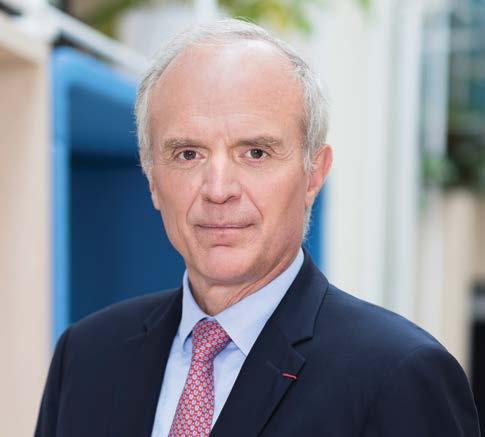
63 conomy middle east MAY 2023
Florent Menegaux, CEO, Michelin
The third and equally important revolution is the Environmental Revolution. Sustainable development is at the heart of Michelin, and the company has reduced the environmental impact of its factories by an impressive 50 percent between 2005 and 2019. Their goal is to achieve zero net emissions by 2050 and reduce water consumption by over 30 percent before the end of the decade.

While Michelin is known for its tires, Menegaux highlighted their involvement in the Michelin Guide, which was recently introduced to Dubai and Abu Dhabi. He explained that they don’t want to be present in markets that can’t offer good, better and best food options. However, with the significant improvement in food quality in the UAE, the Michelin Guide was introduced to help people select the best food options in every market. The guide also helps develop tourism, and the GCC region is actively diversifying from just producing oil, making it a smart move for Michelin to support the region’s growth.

64 conomy middle east MAY 2023


23 rd EDITION
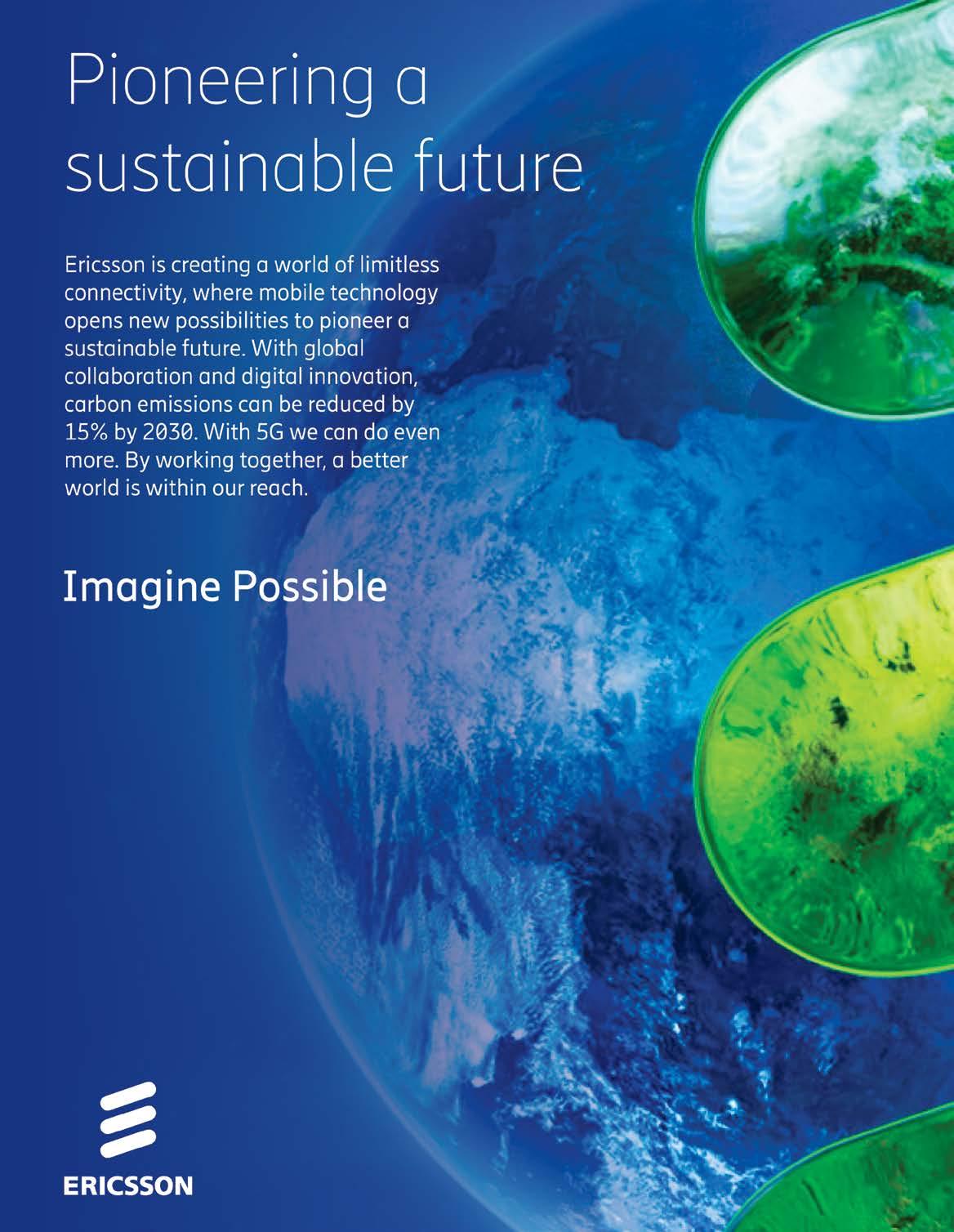















 With H.E. Issam Kazim, CEO of the Dubai Corporation for Tourism & Commerce Marketing
With Jochem-Jan Sleiffer, President of Middle East, Africa & Türkiye, Hilton
With Roberta Gatti, Chief Economist Middle East and North Africa, World Bank
With Simon Casson, President of Hotel Operations for Europe, Middle East, and Africa, Four Seasons
DET: The driving force behind Dubai's tourism success Hilton: Growth, workplace culture, ESG strategy
Solutions to combat MENA's food insecurity challenges
Cover Story with John Pagano, Group Chief Executive Officer, Red Sea Global
With H.E. Issam Kazim, CEO of the Dubai Corporation for Tourism & Commerce Marketing
With Jochem-Jan Sleiffer, President of Middle East, Africa & Türkiye, Hilton
With Roberta Gatti, Chief Economist Middle East and North Africa, World Bank
With Simon Casson, President of Hotel Operations for Europe, Middle East, and Africa, Four Seasons
DET: The driving force behind Dubai's tourism success Hilton: Growth, workplace culture, ESG strategy
Solutions to combat MENA's food insecurity challenges
Cover Story with John Pagano, Group Chief Executive Officer, Red Sea Global


































 Simon Casson, President of Hotel Operations for Europe, Middle East, and Africa, Four Seasons
Simon Casson, President of Hotel Operations for Europe, Middle East, and Africa, Four Seasons













 Joseph
Manager,
Joseph
Manager,










































